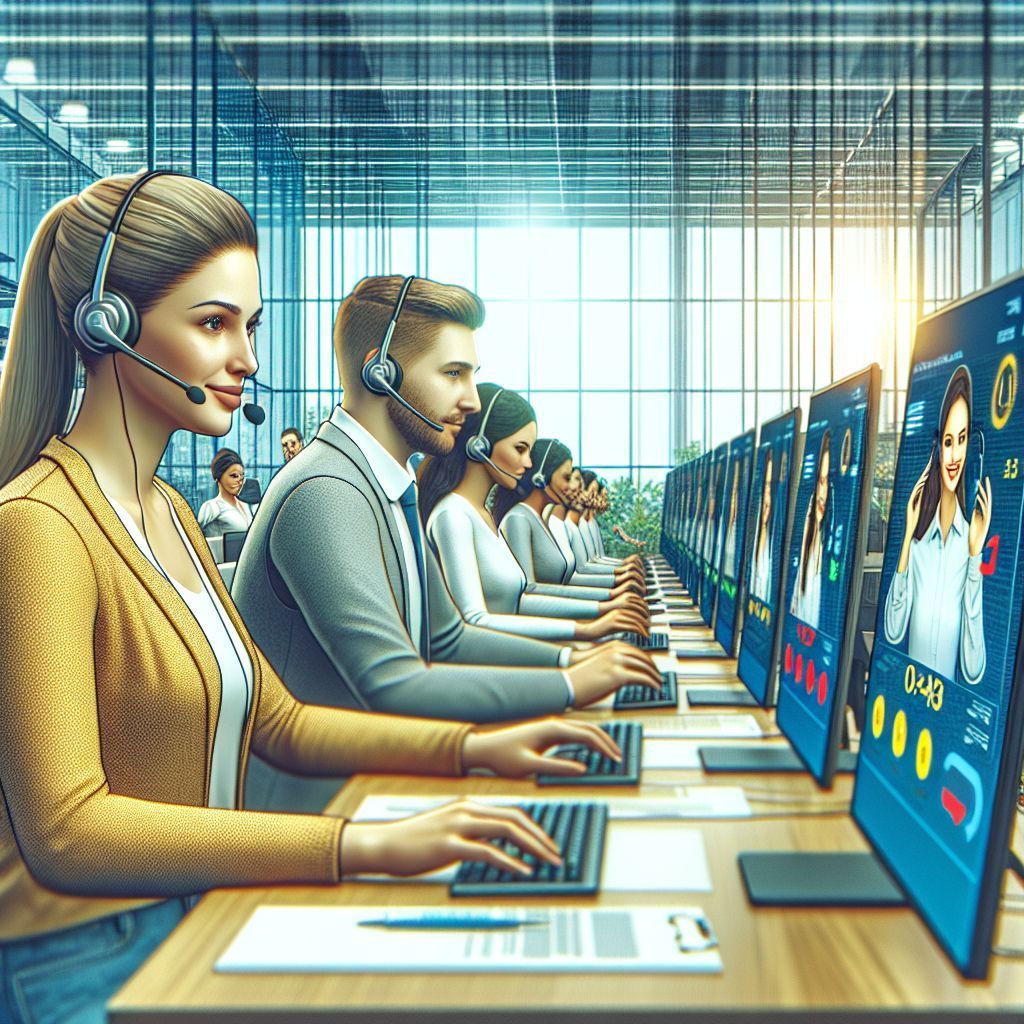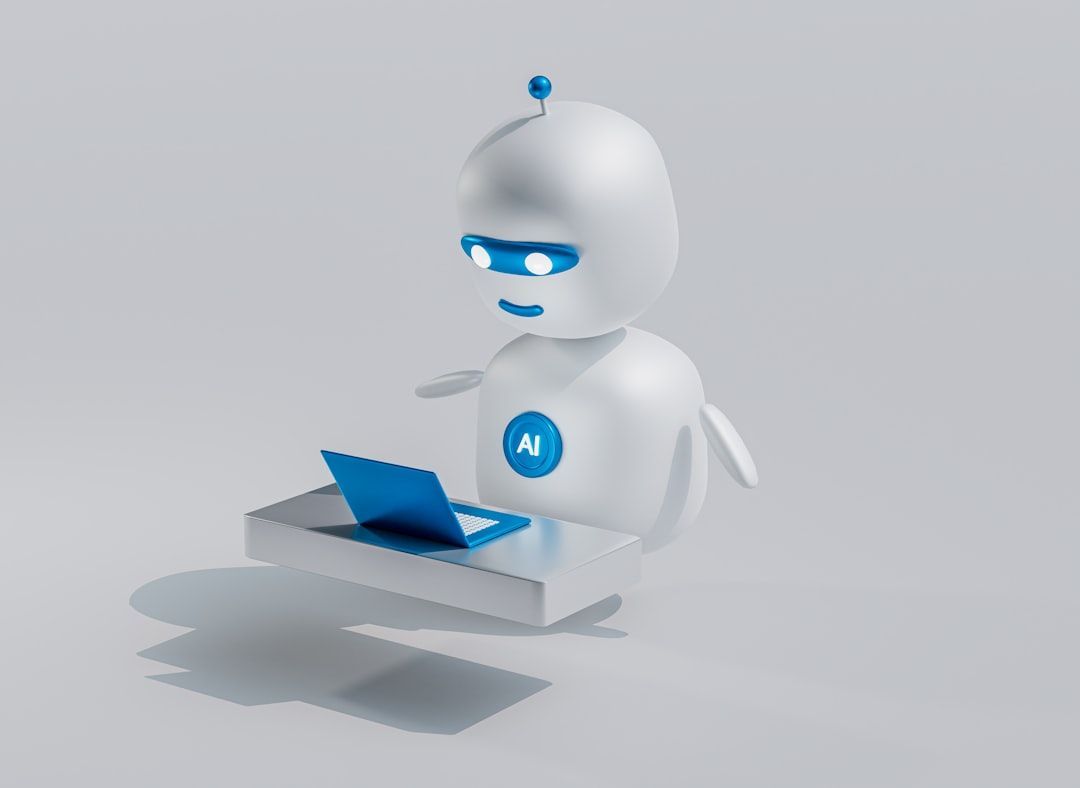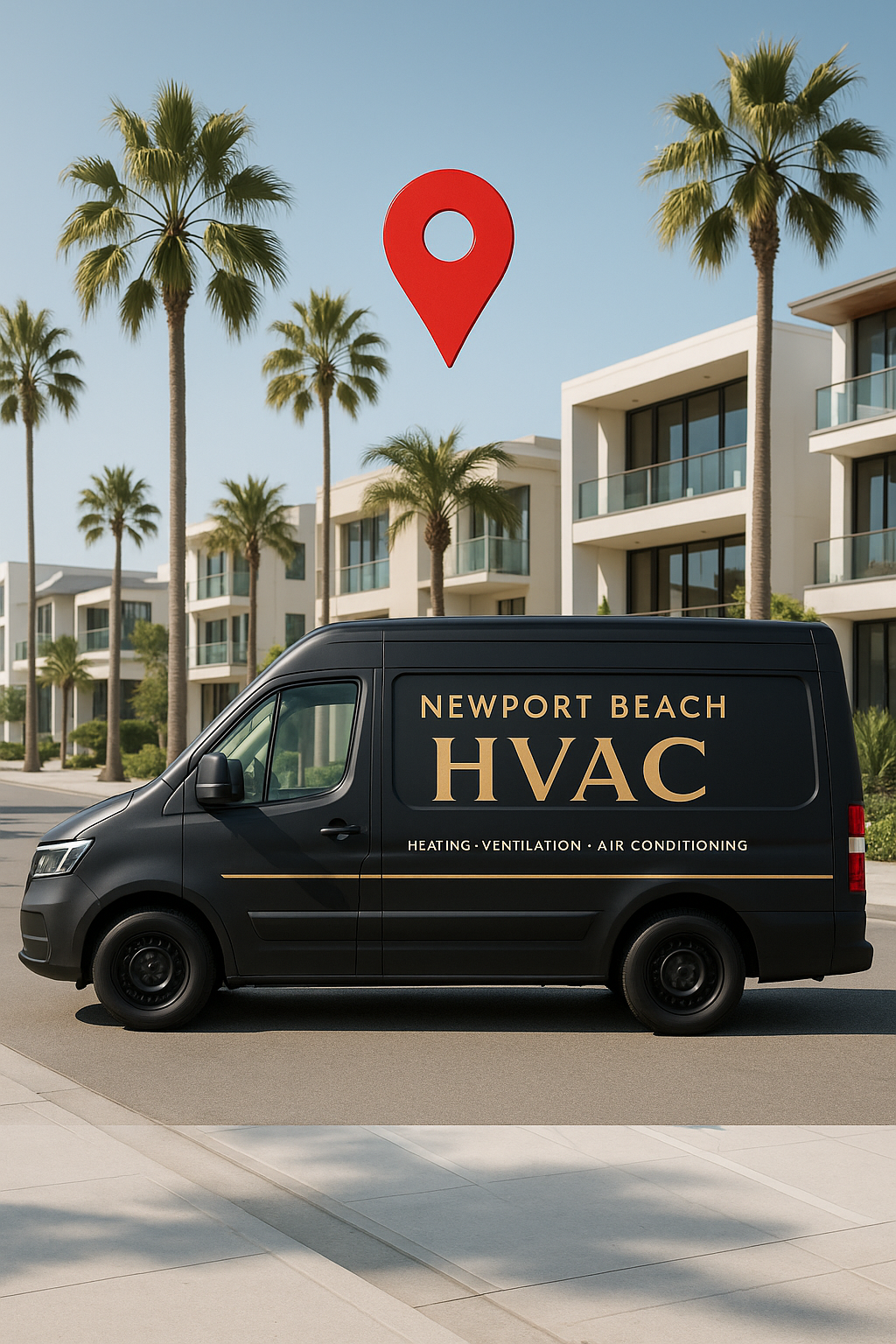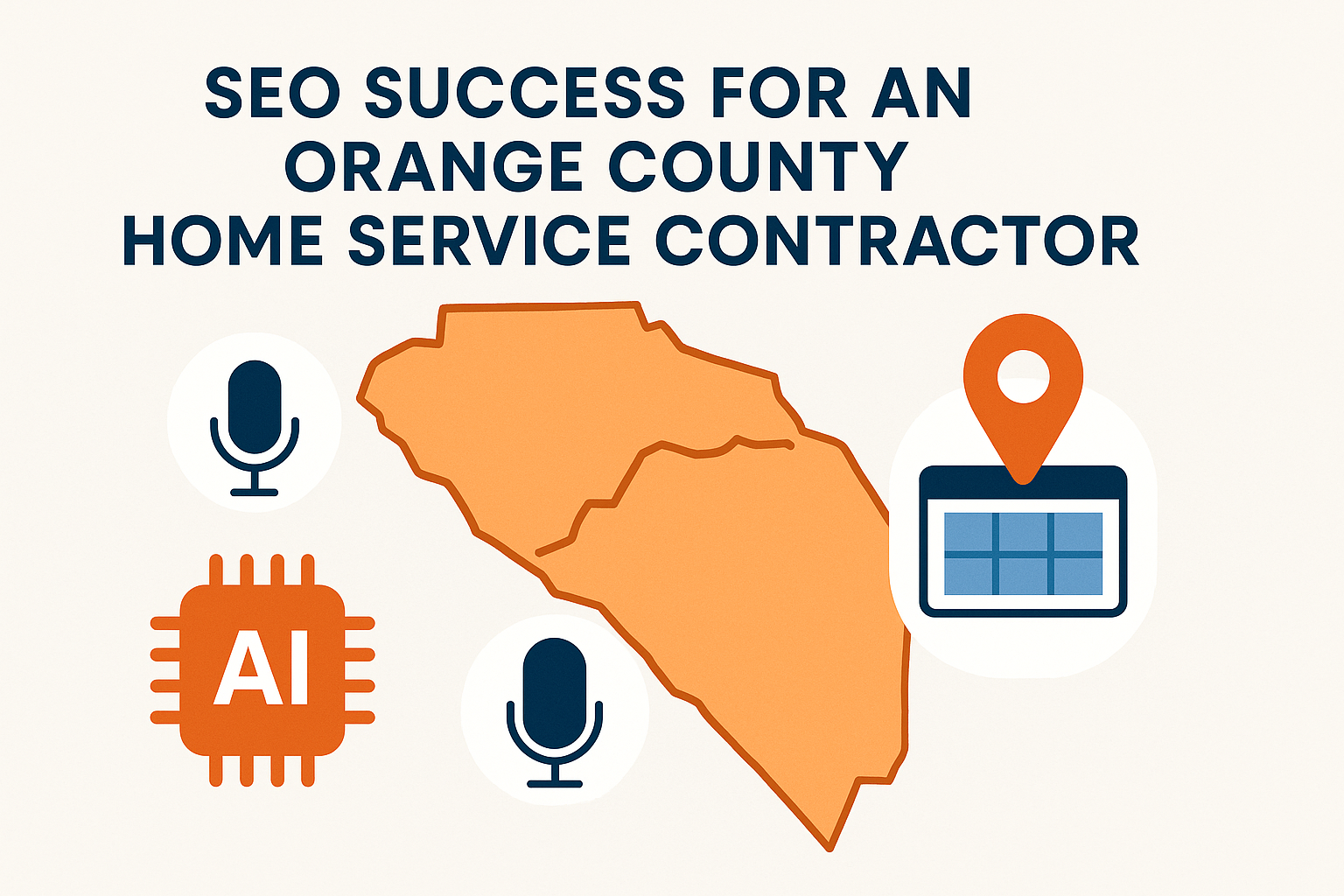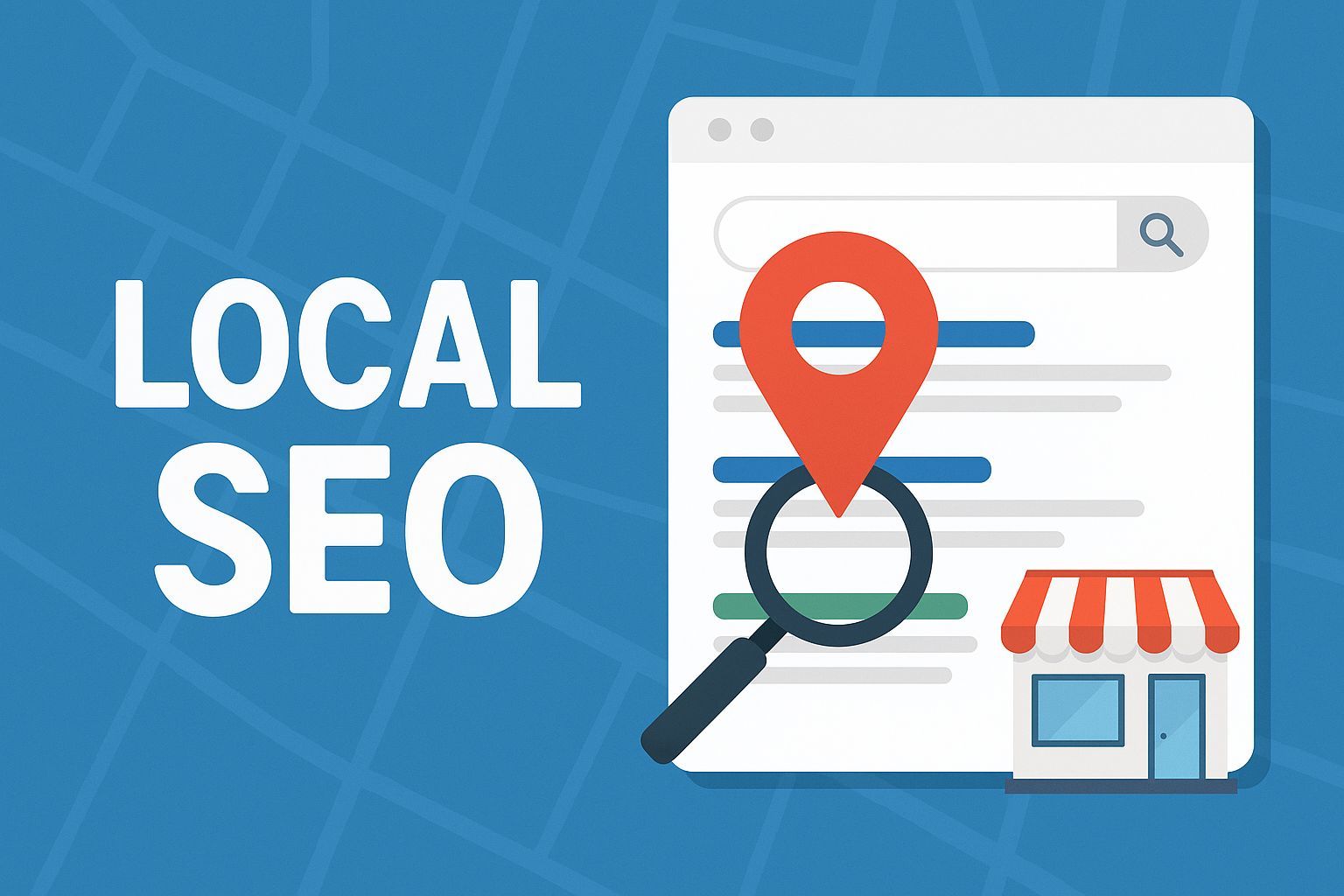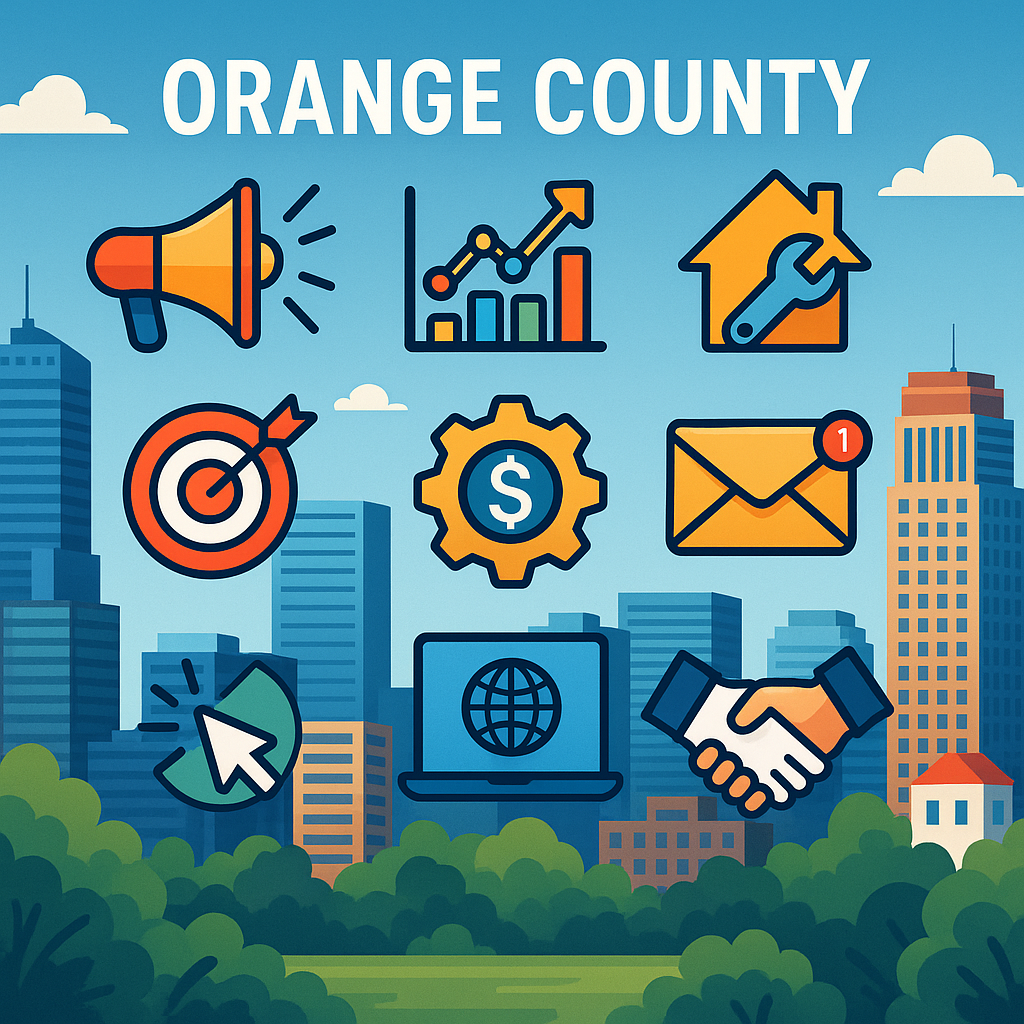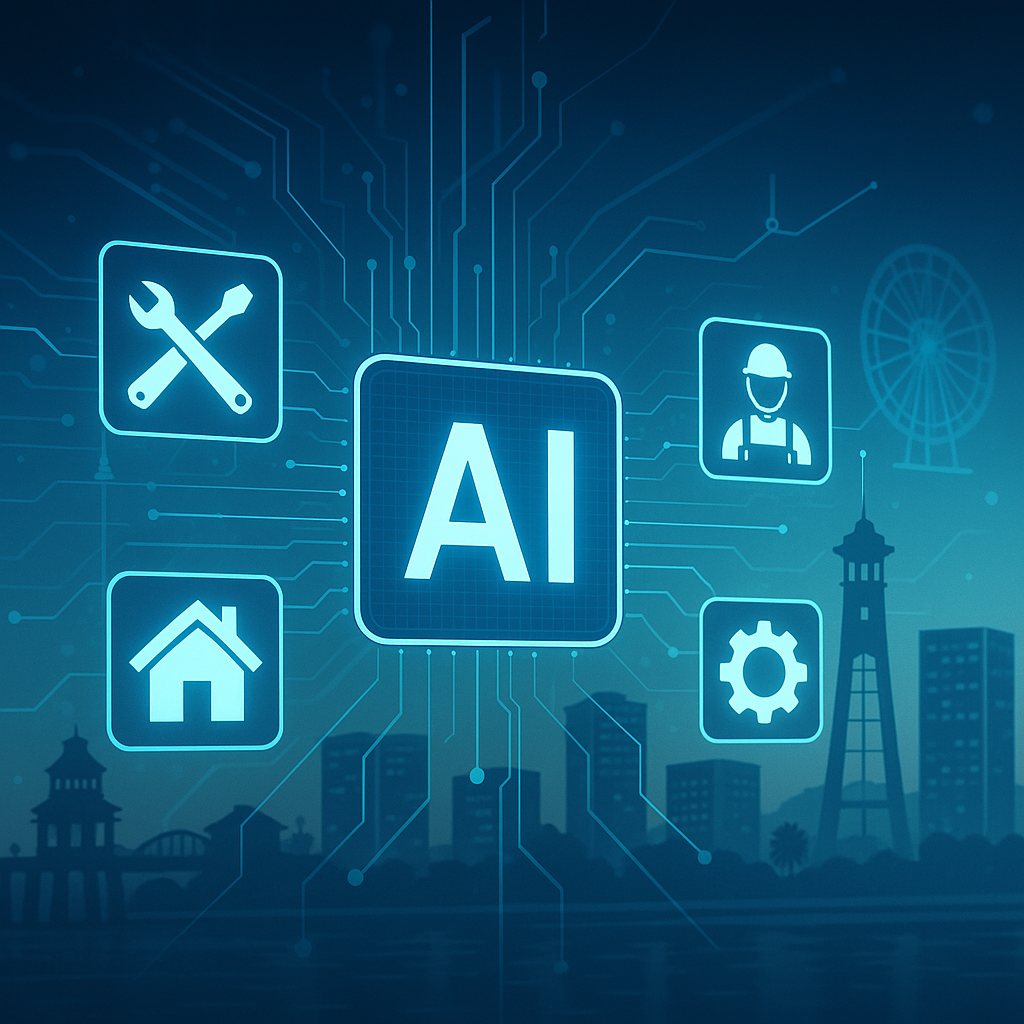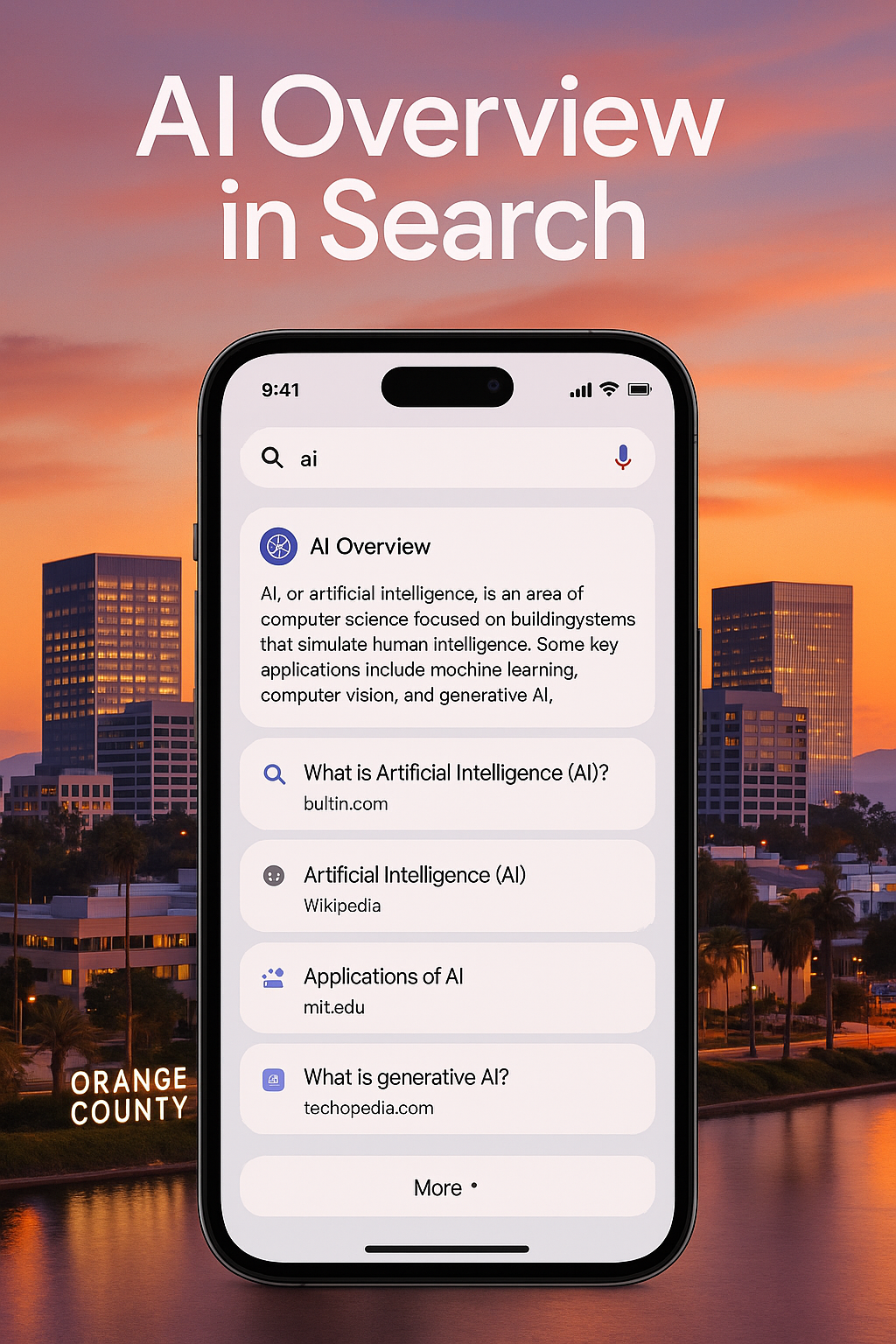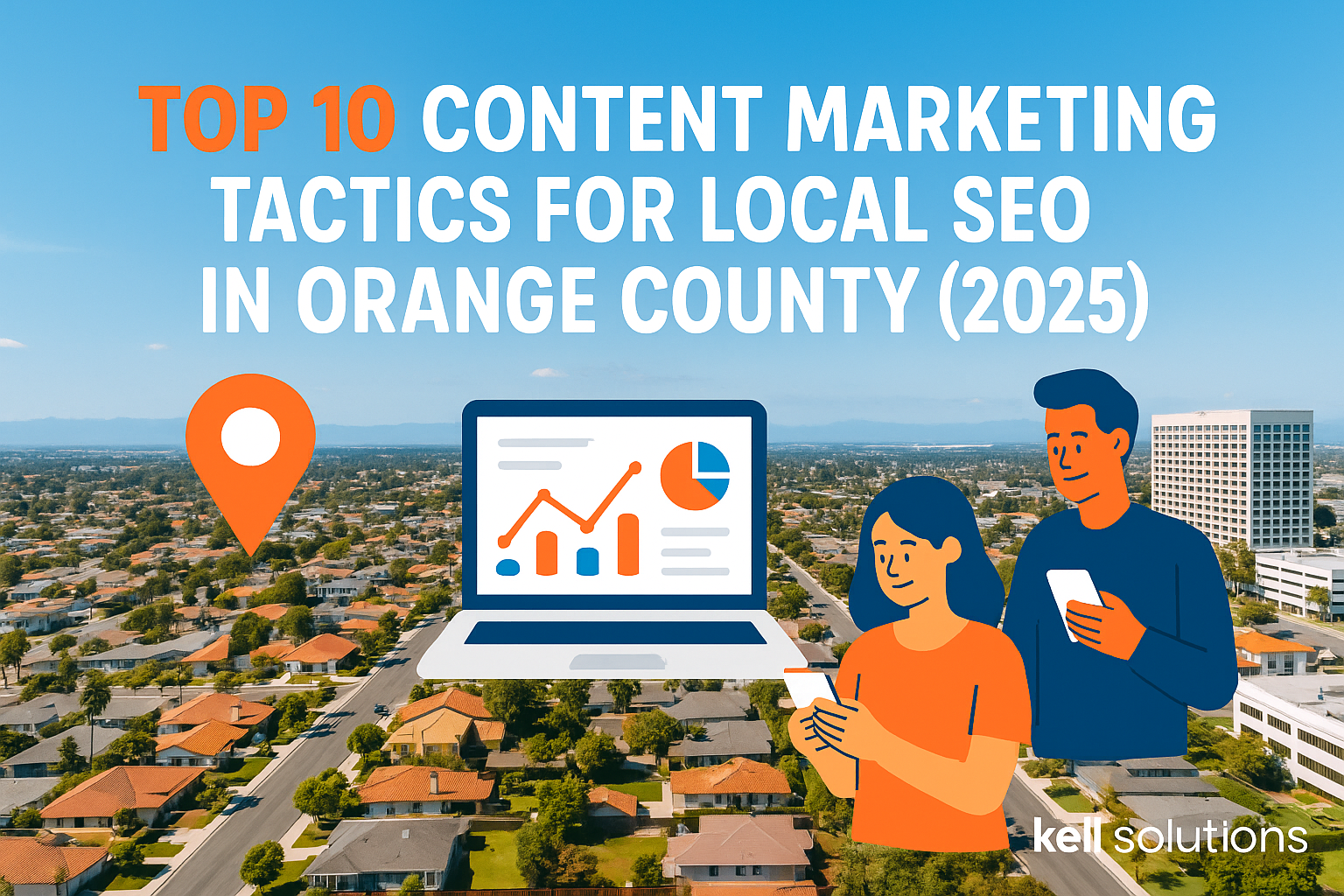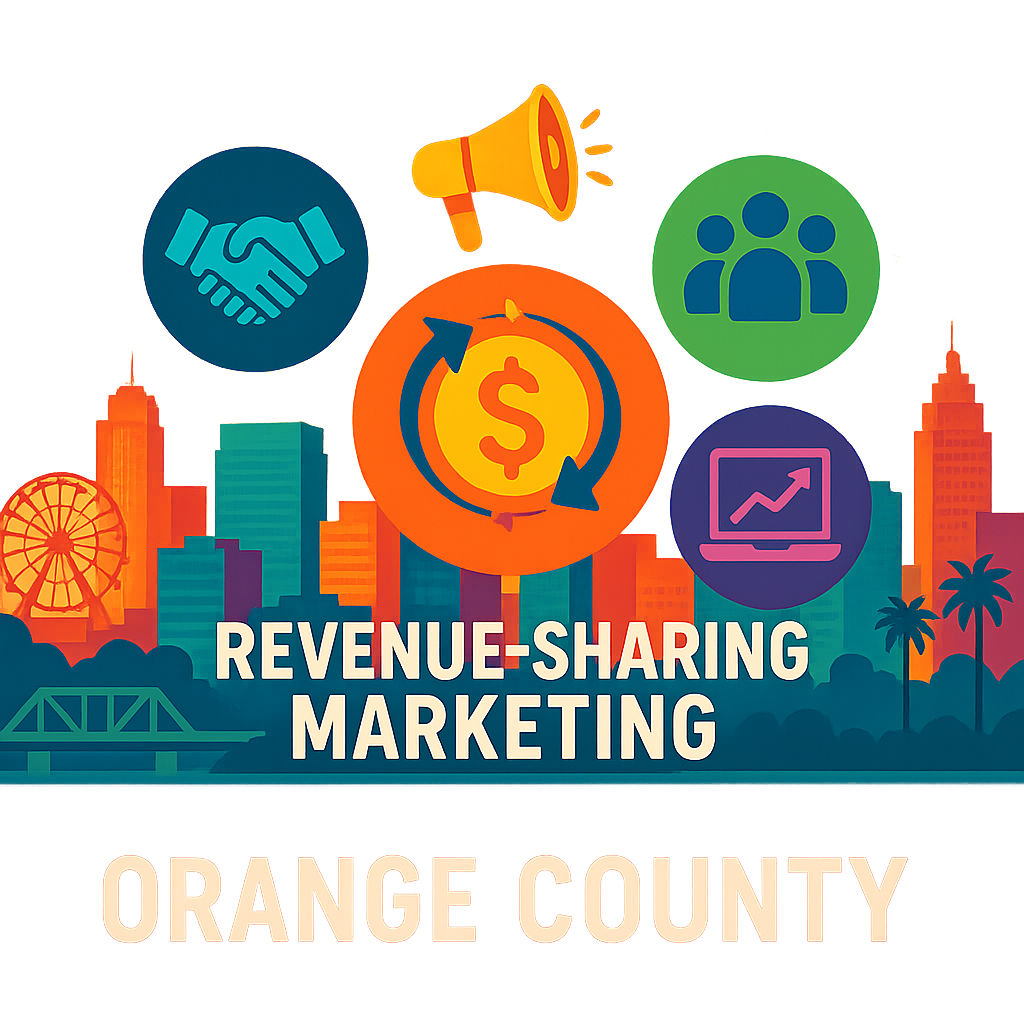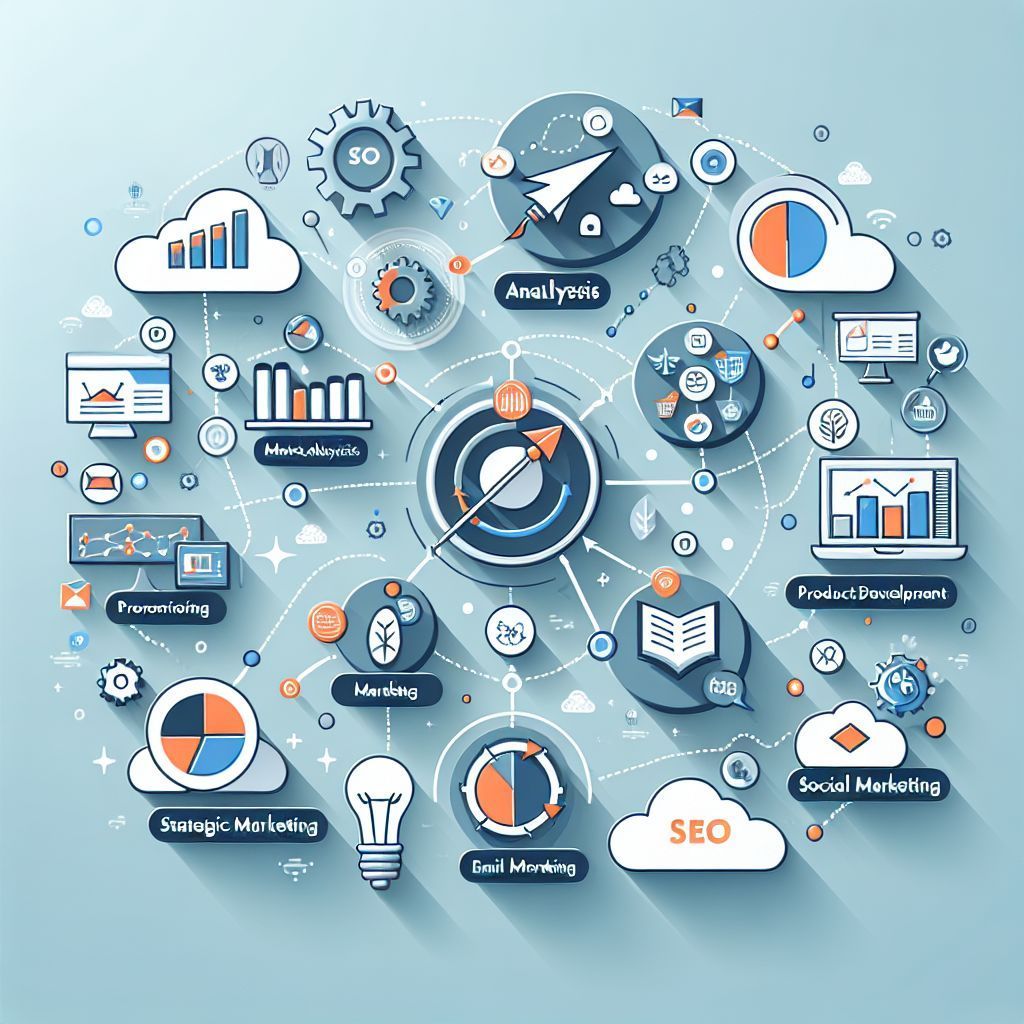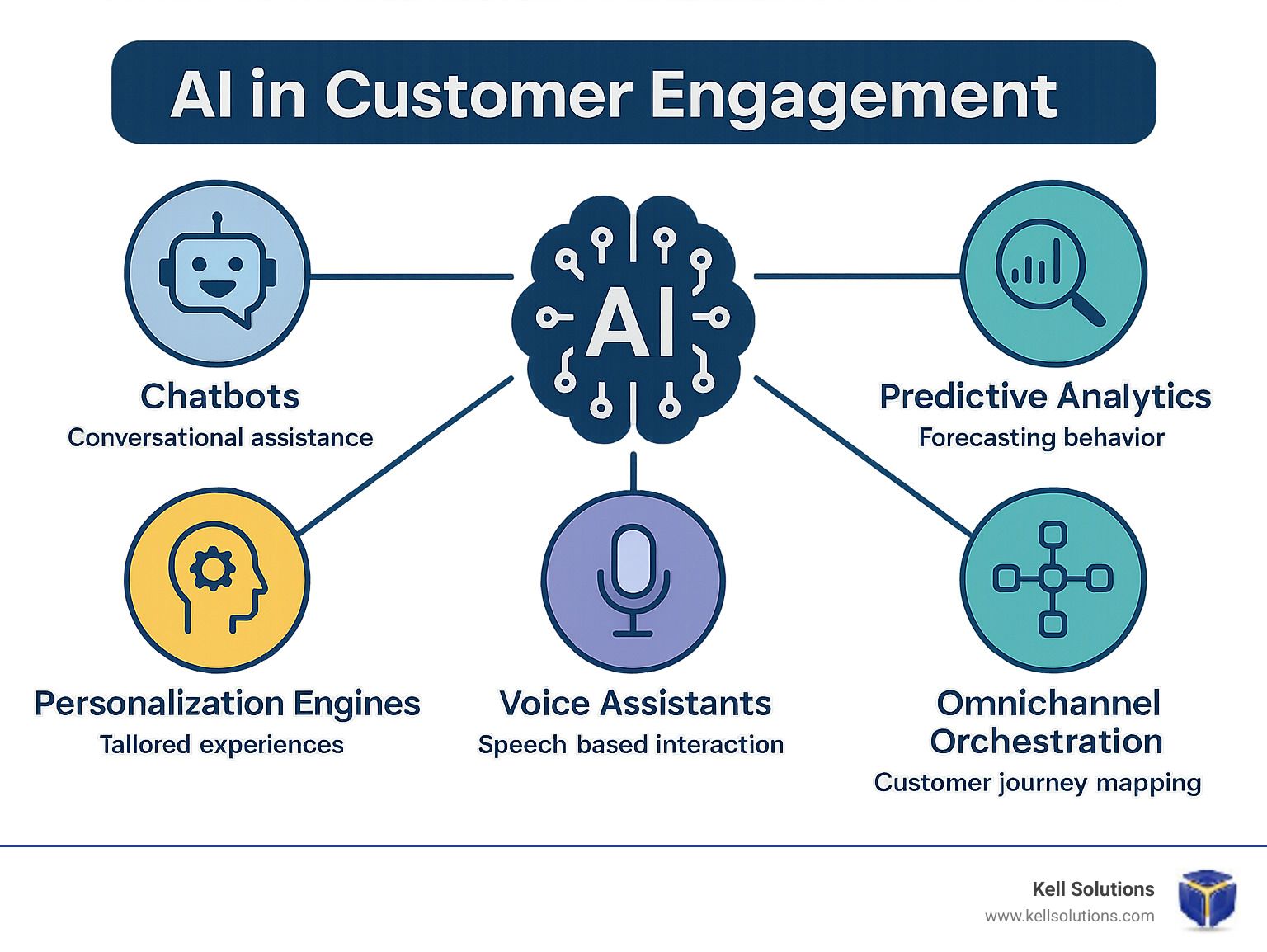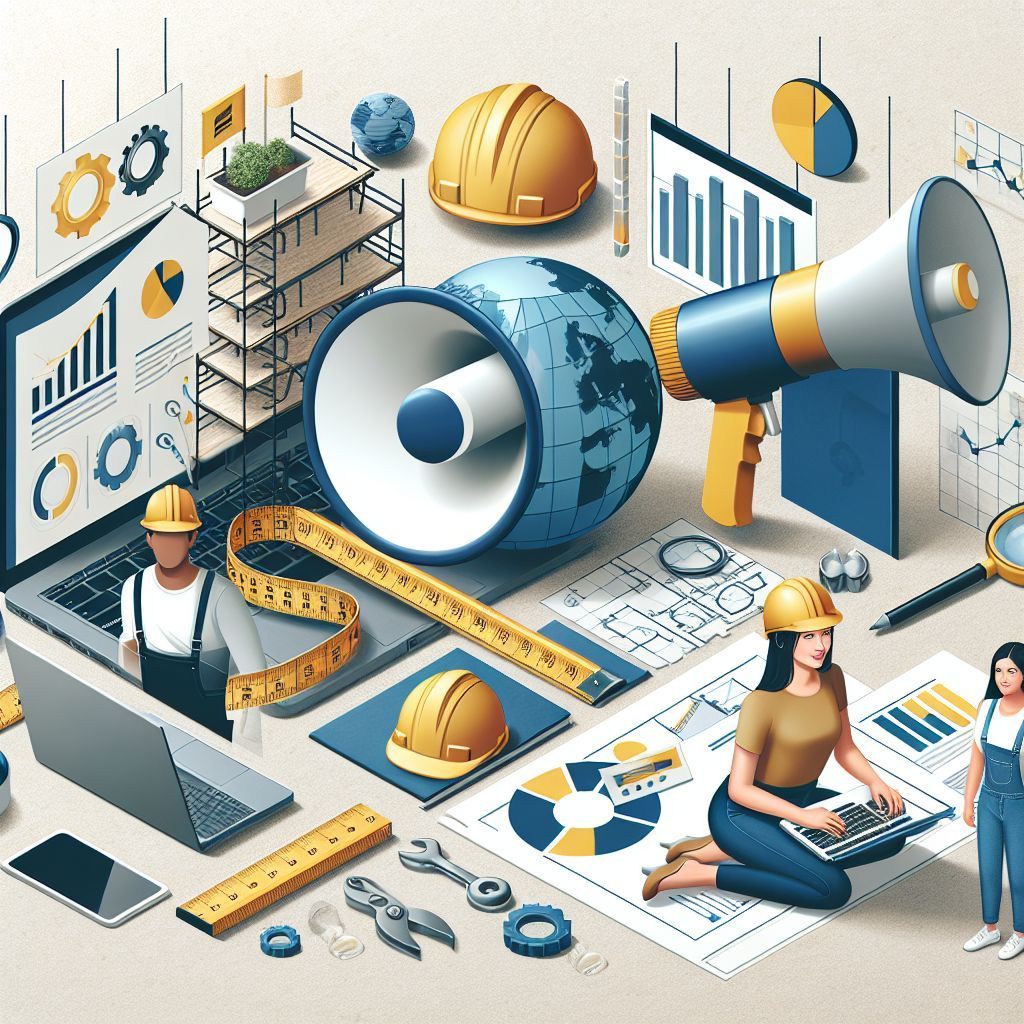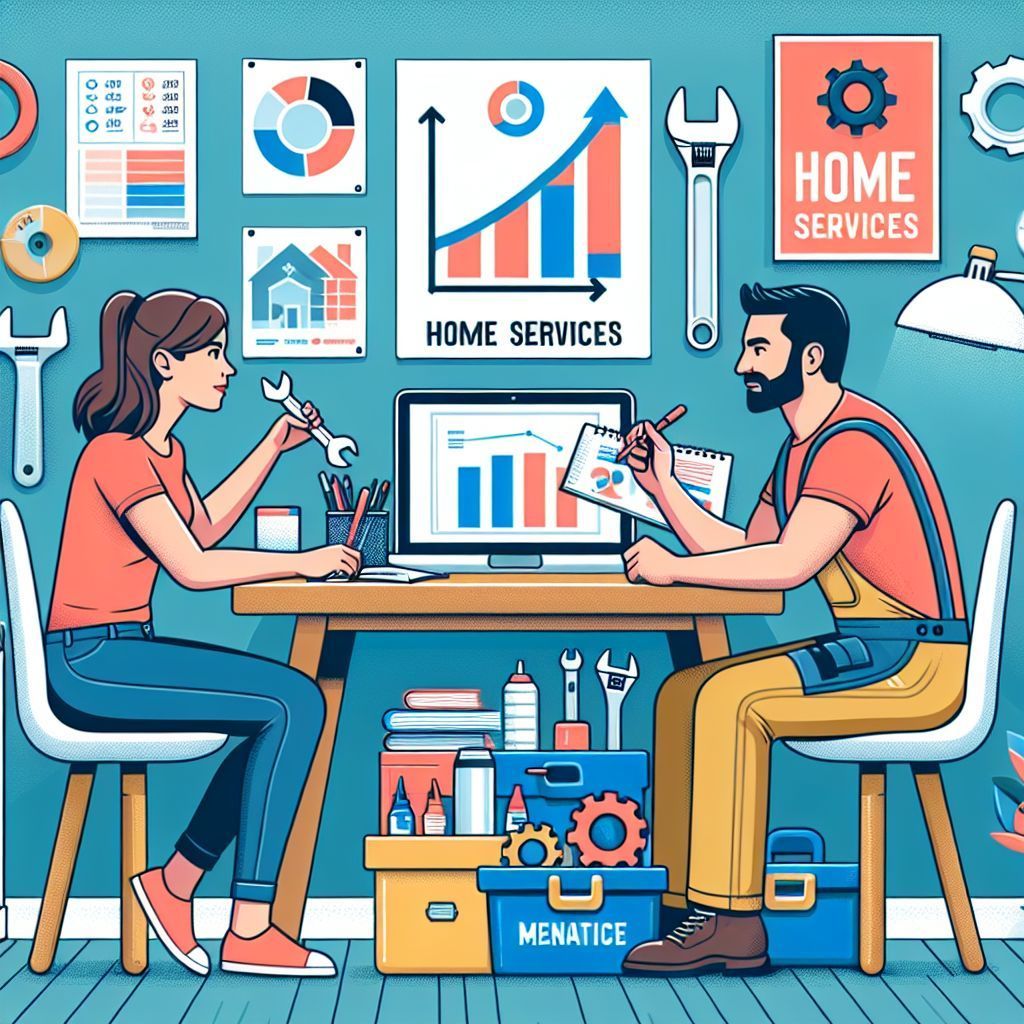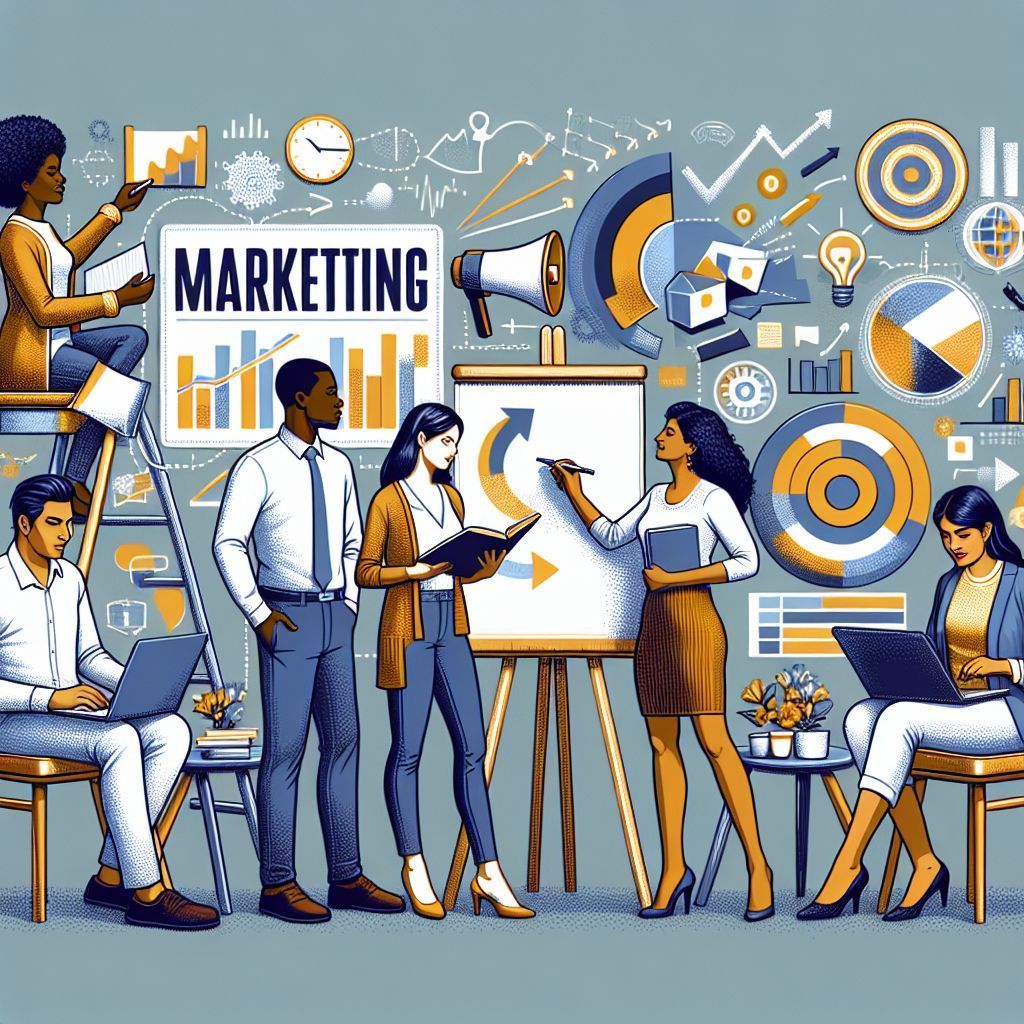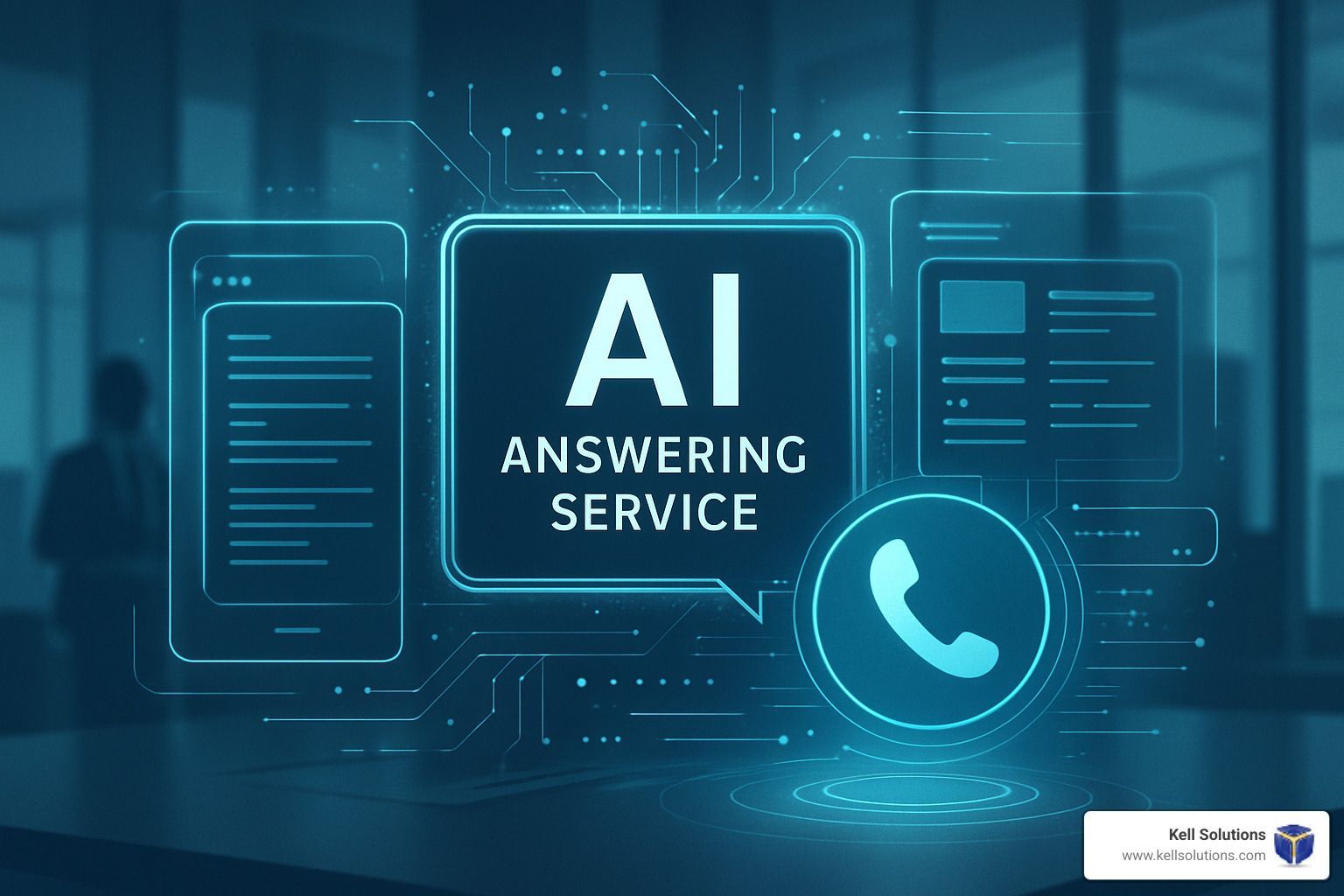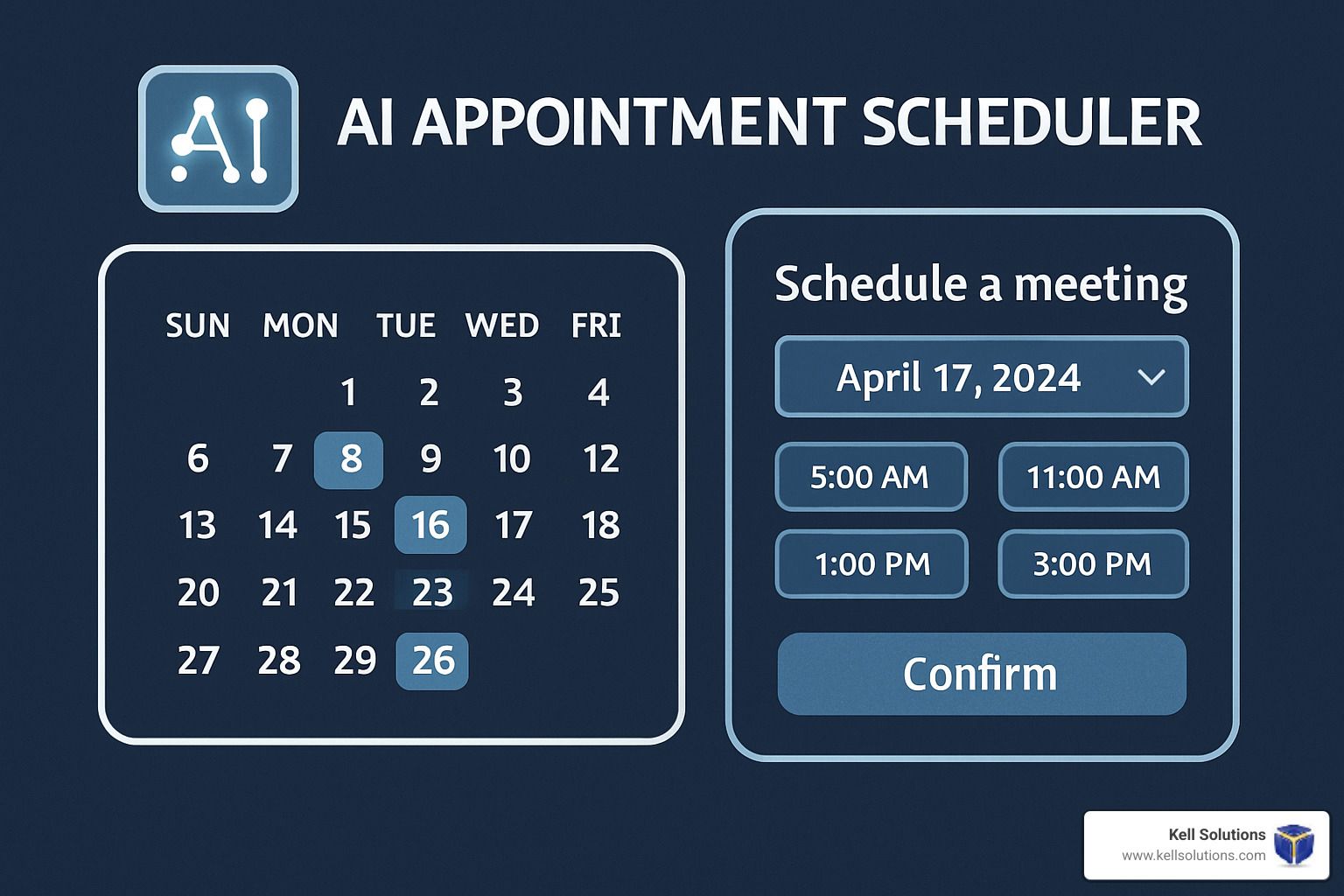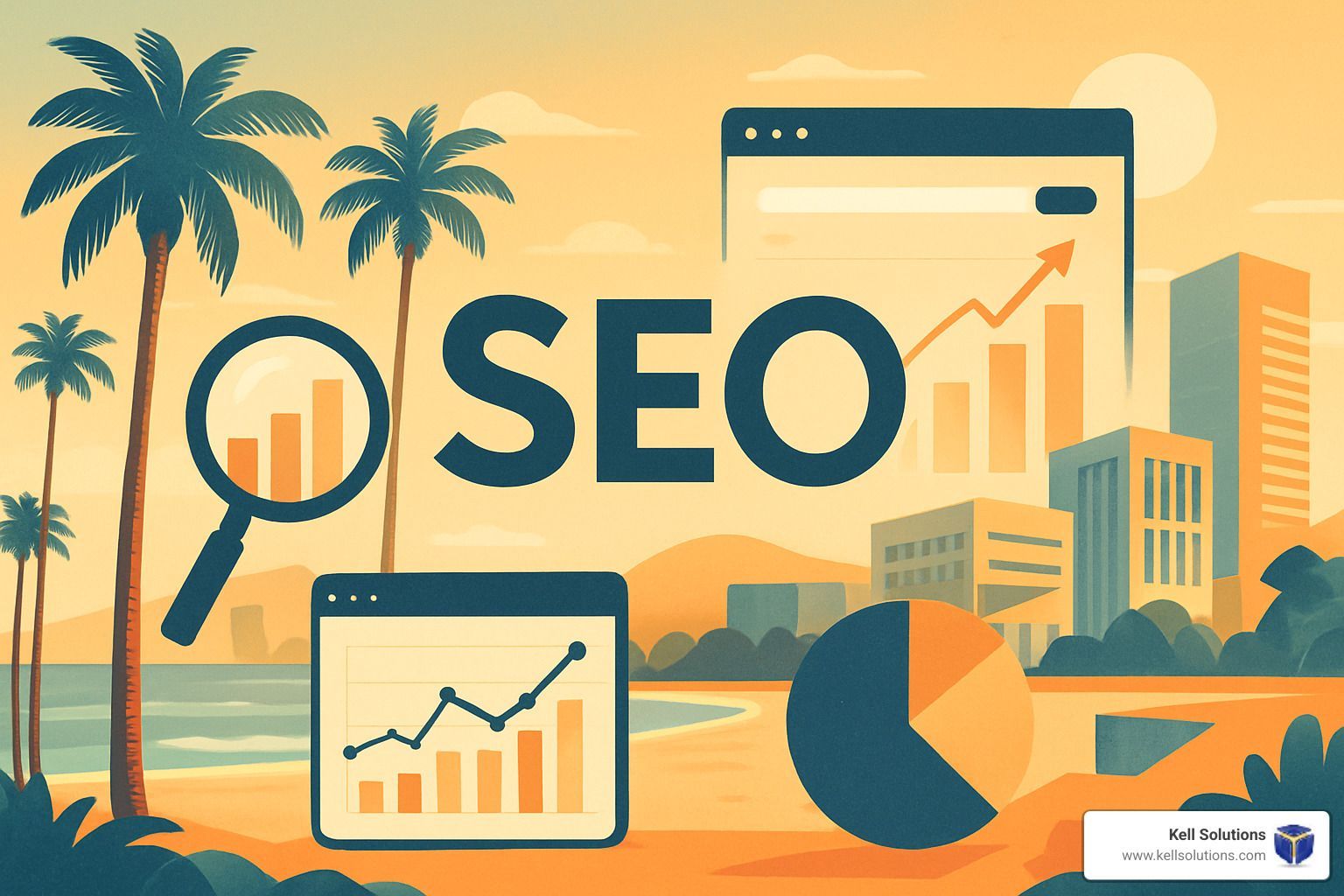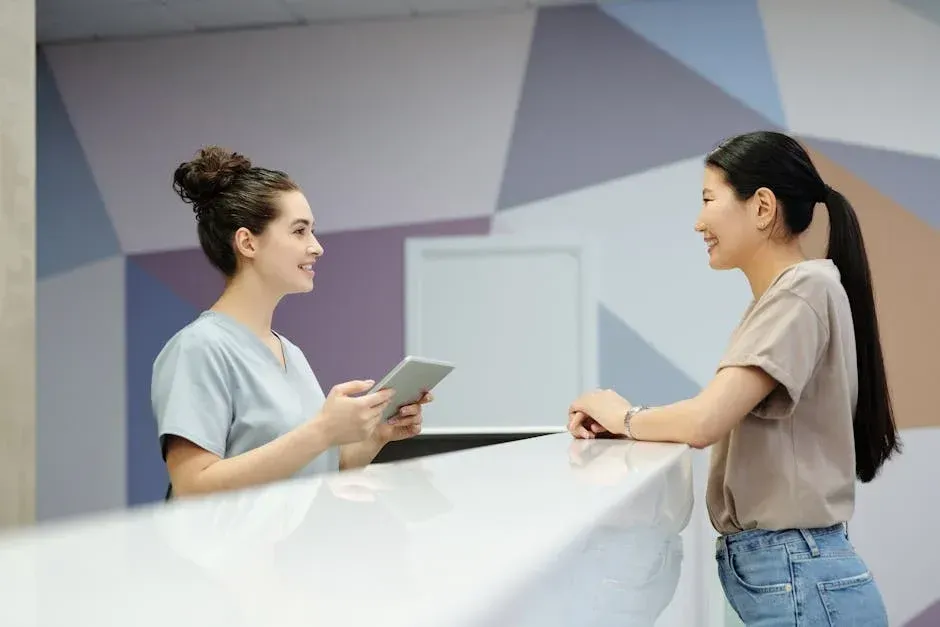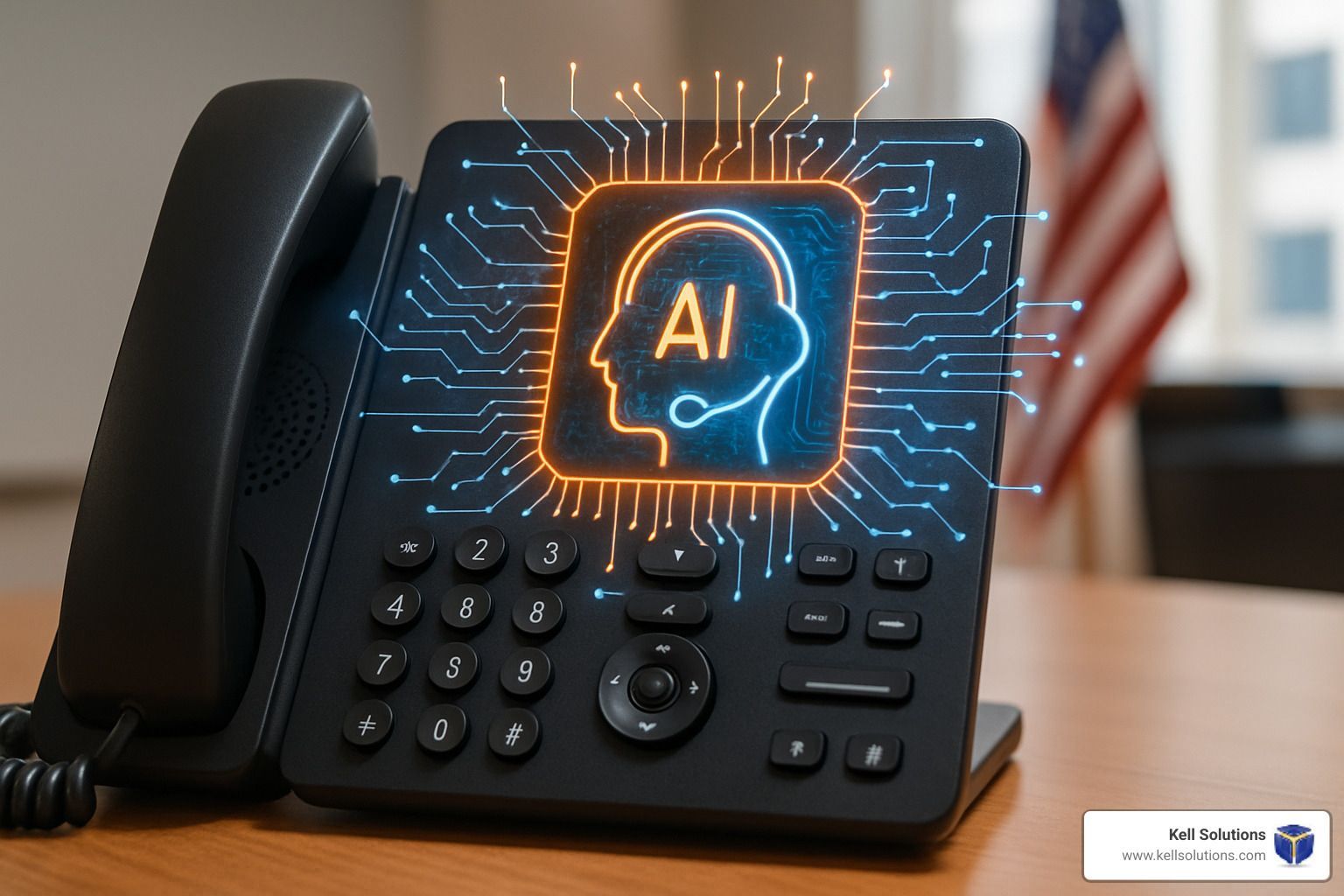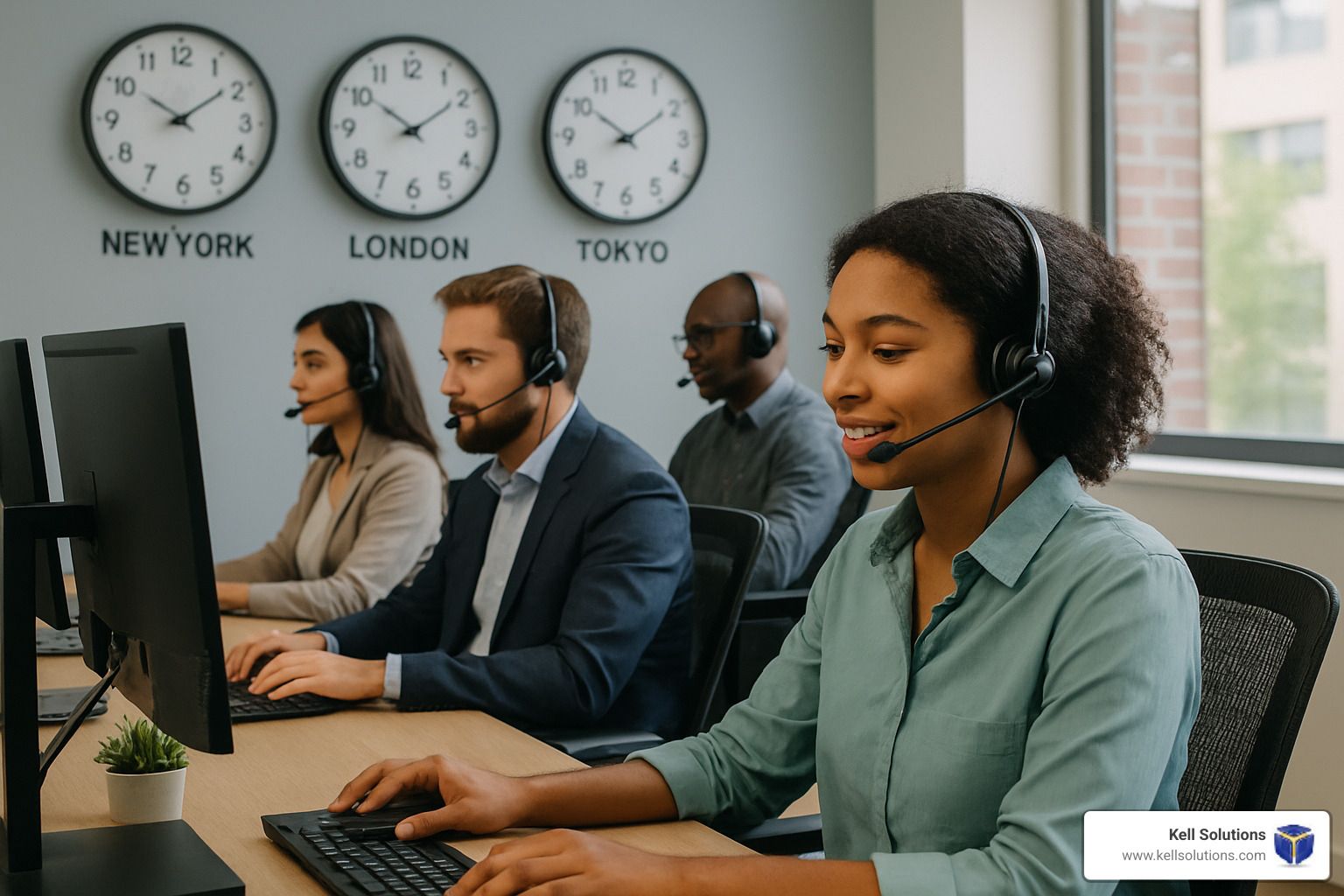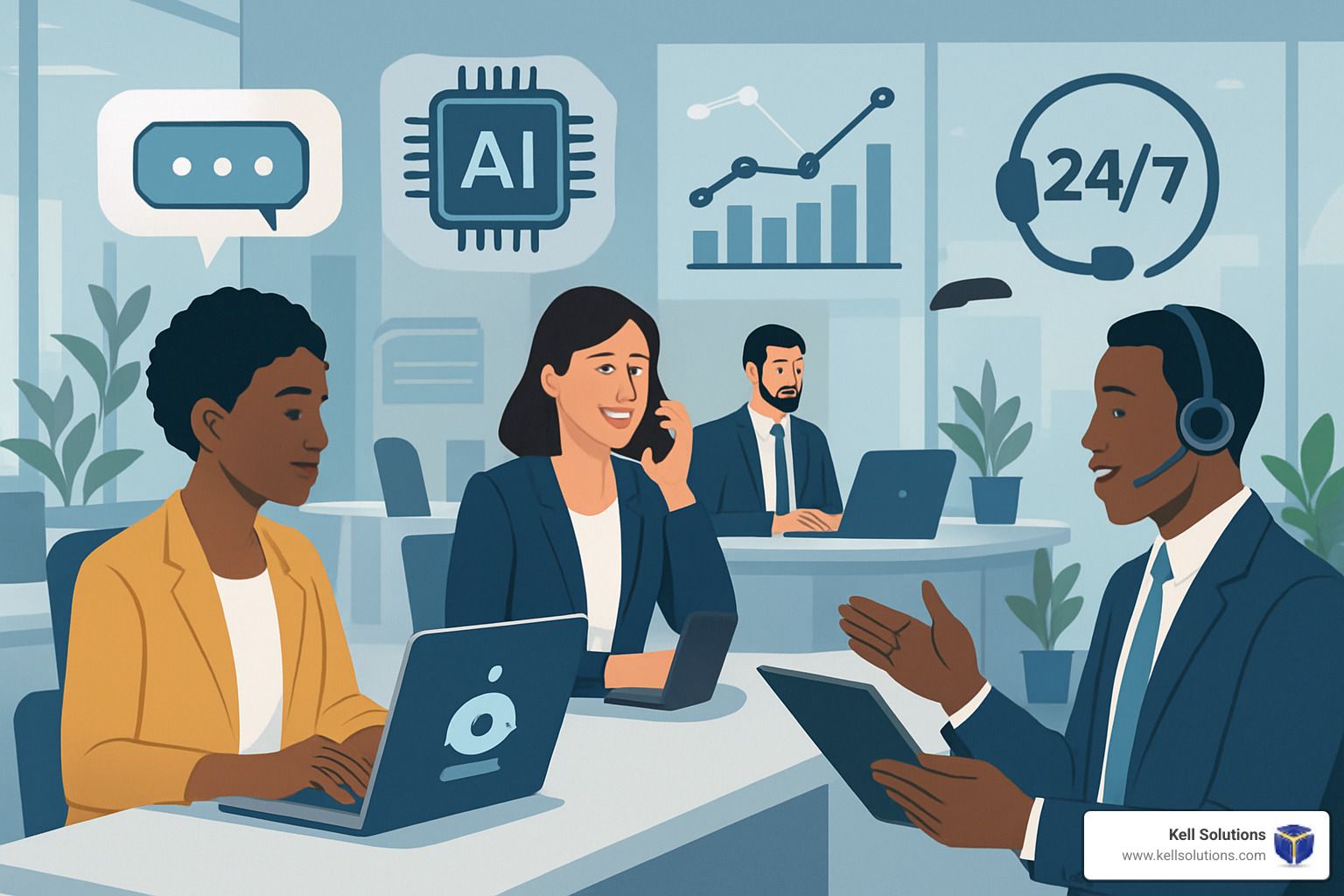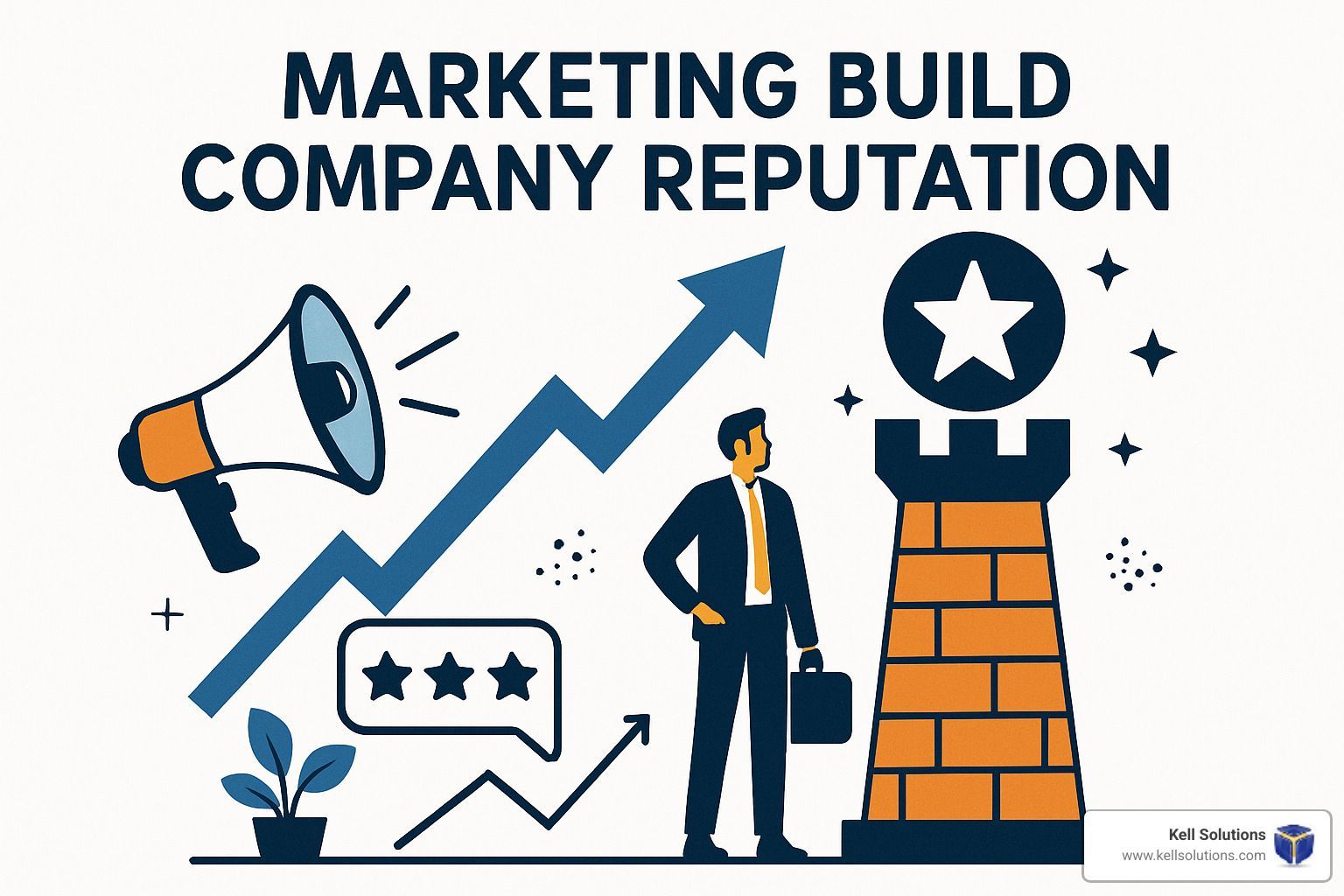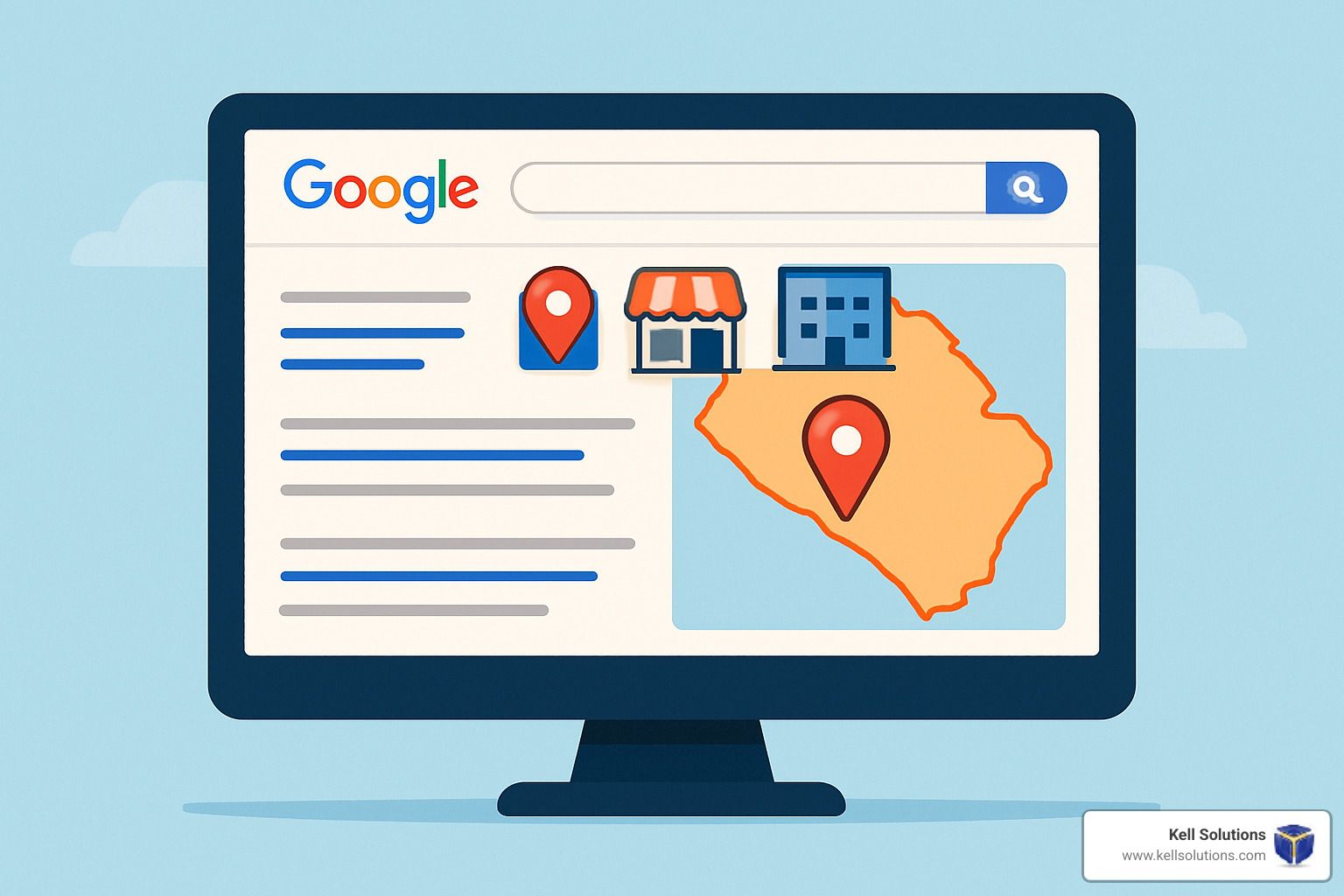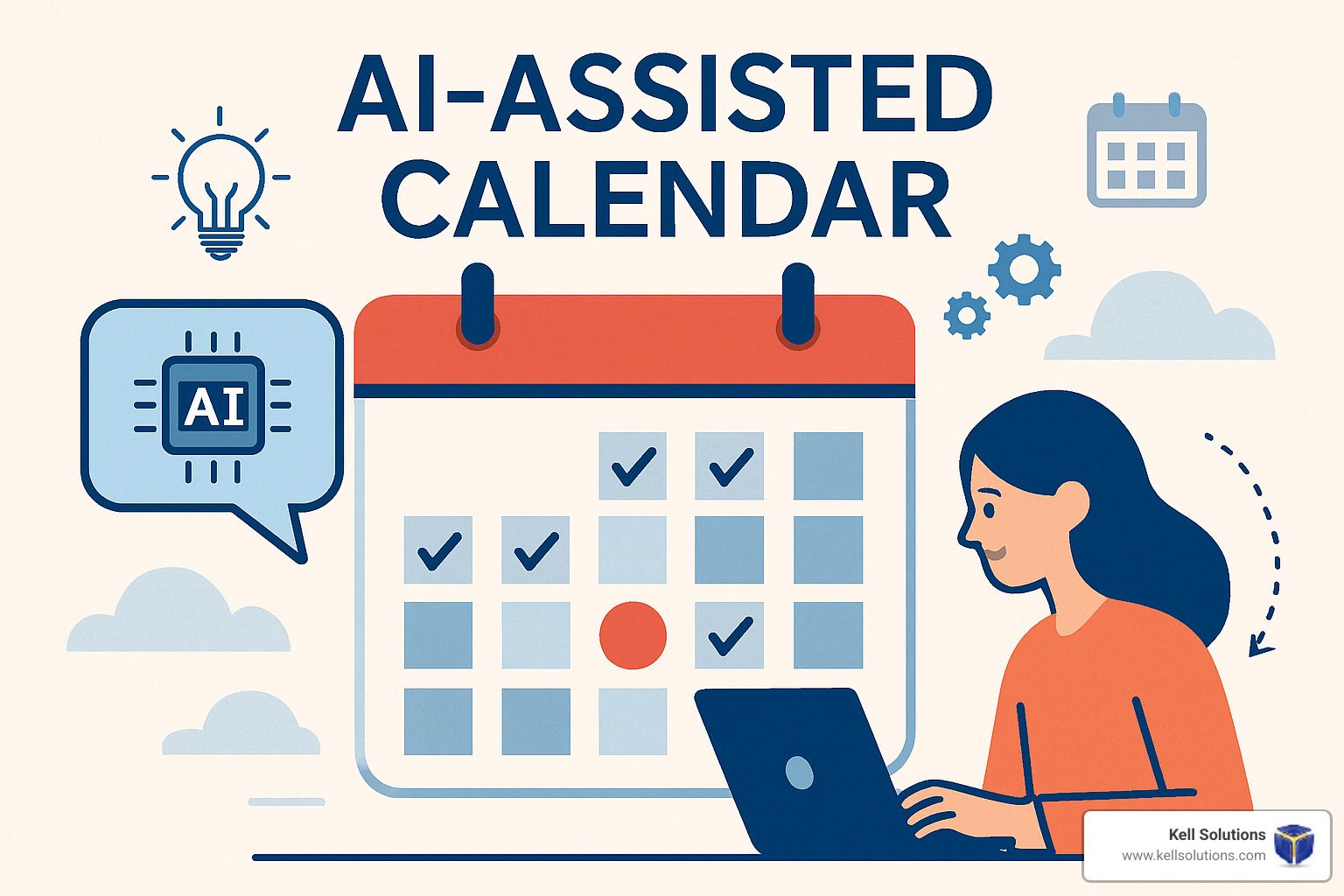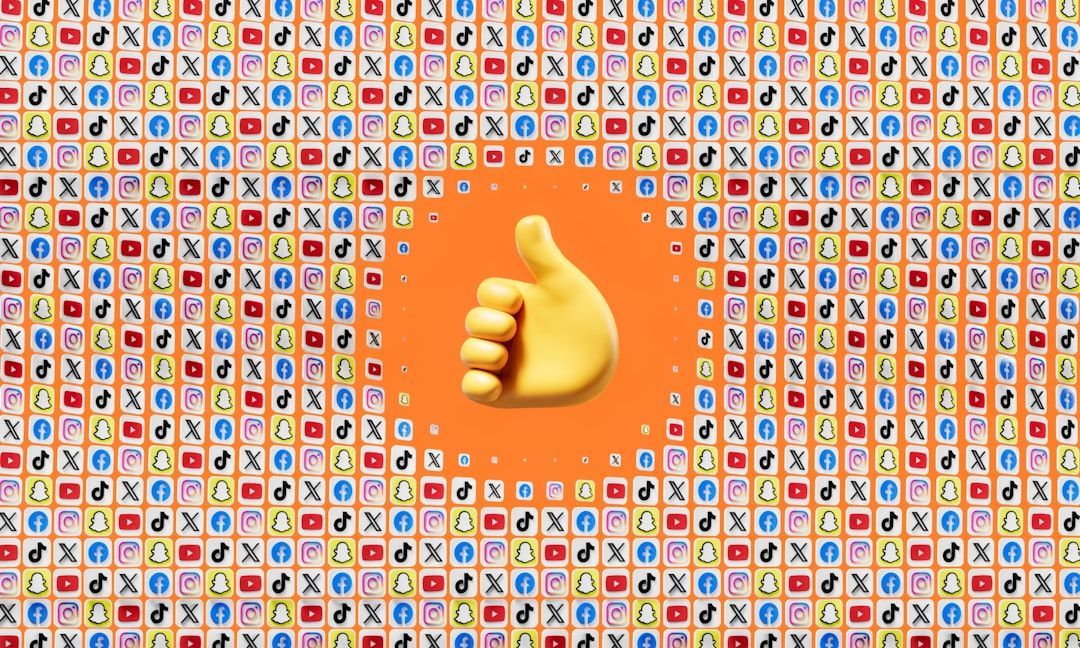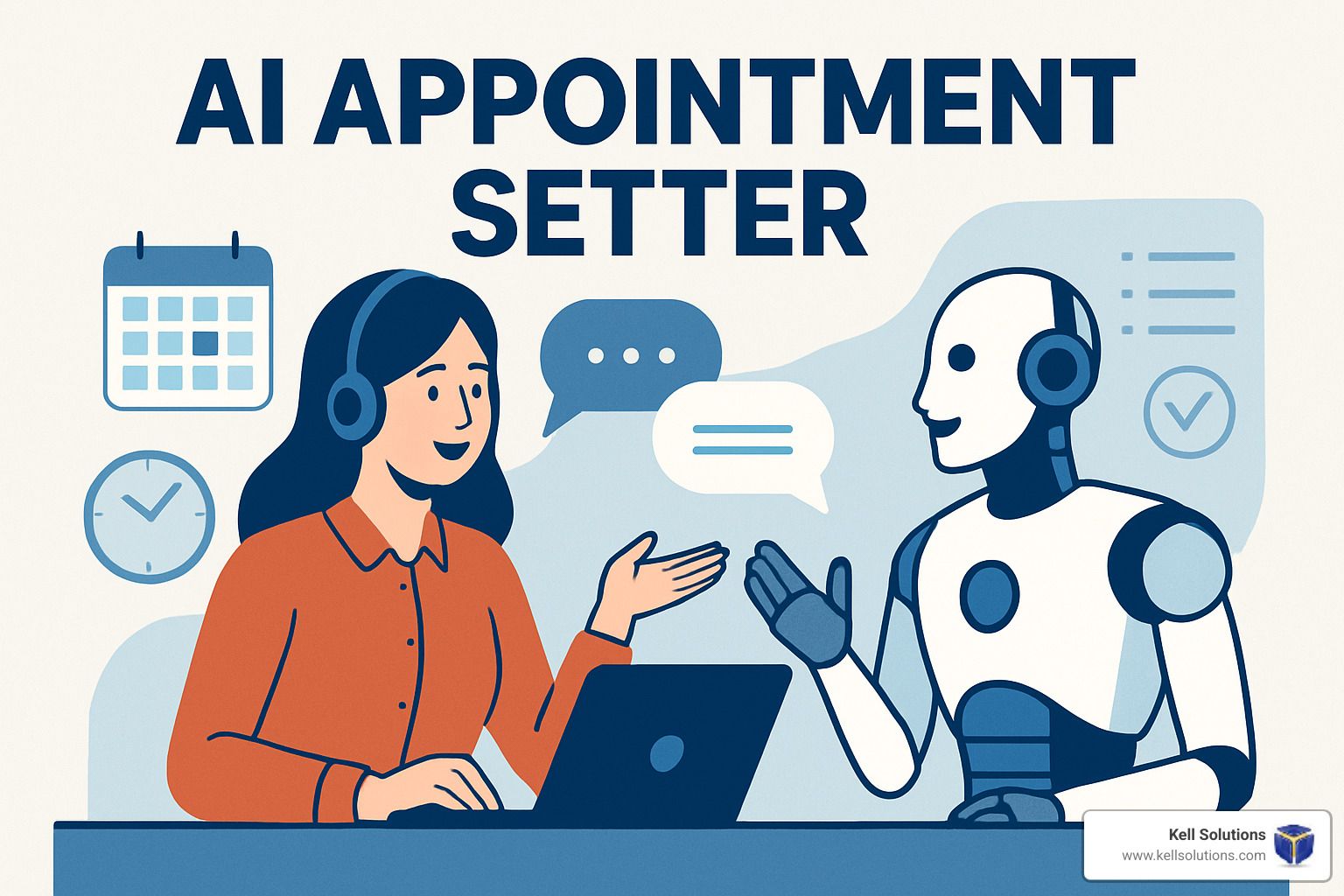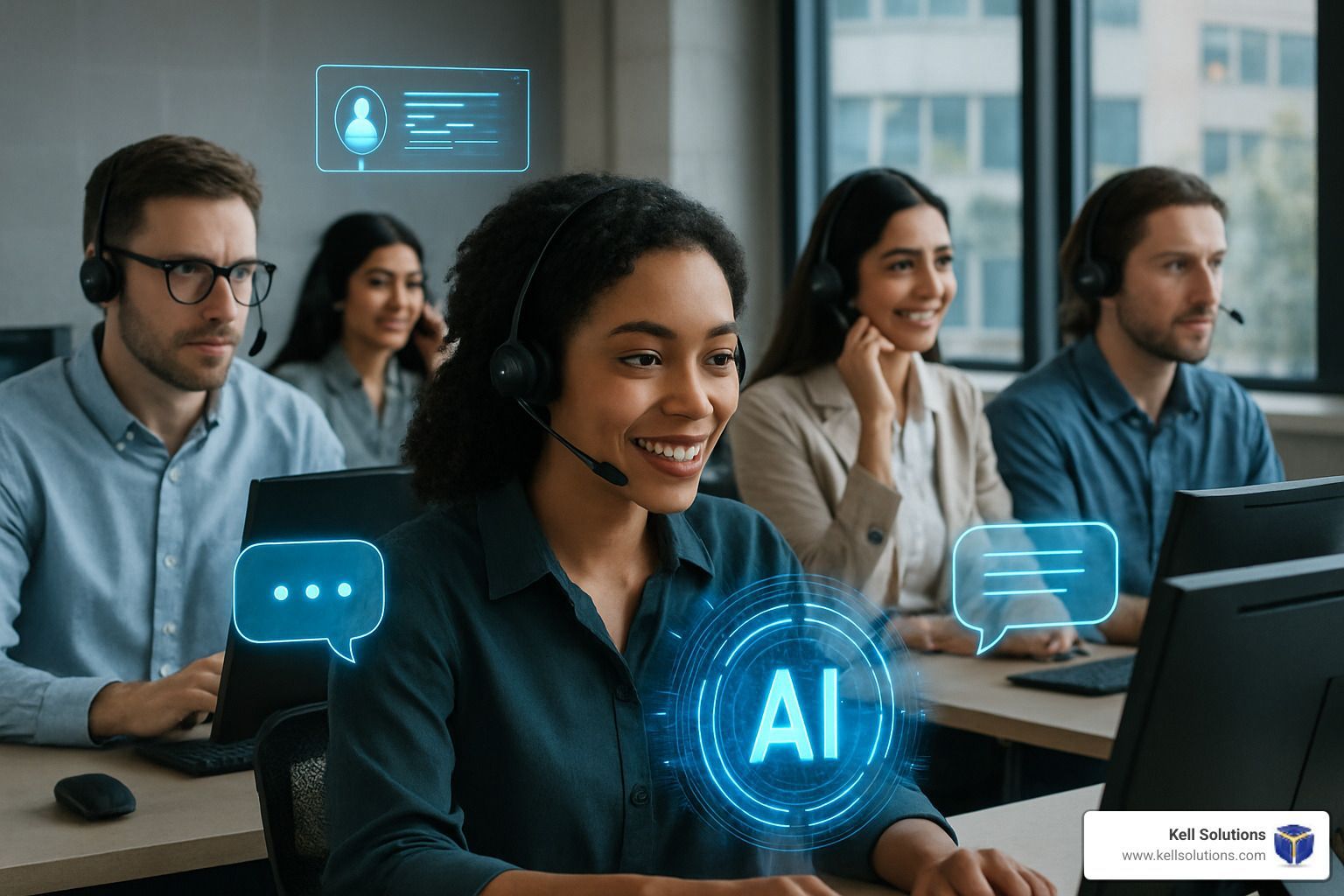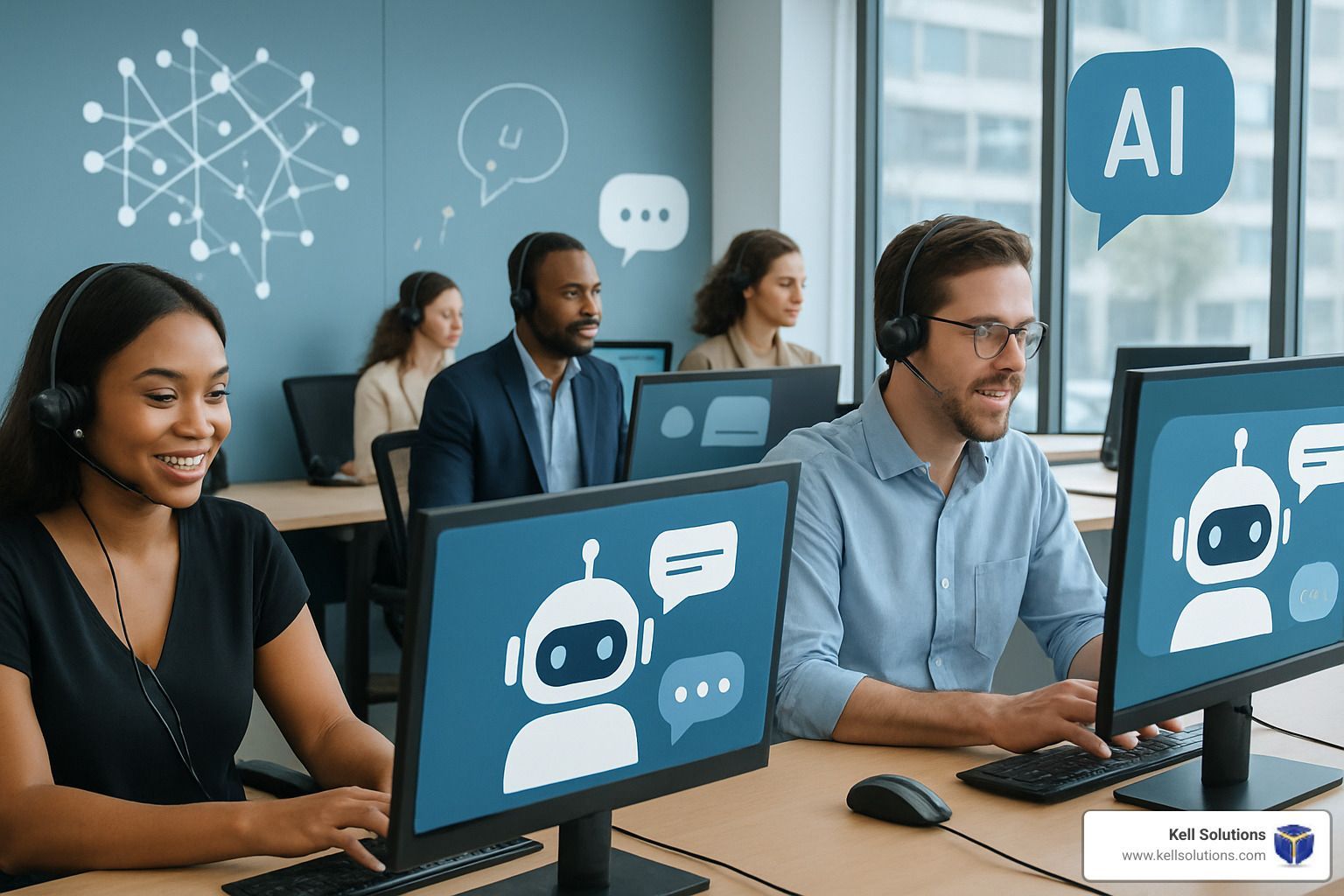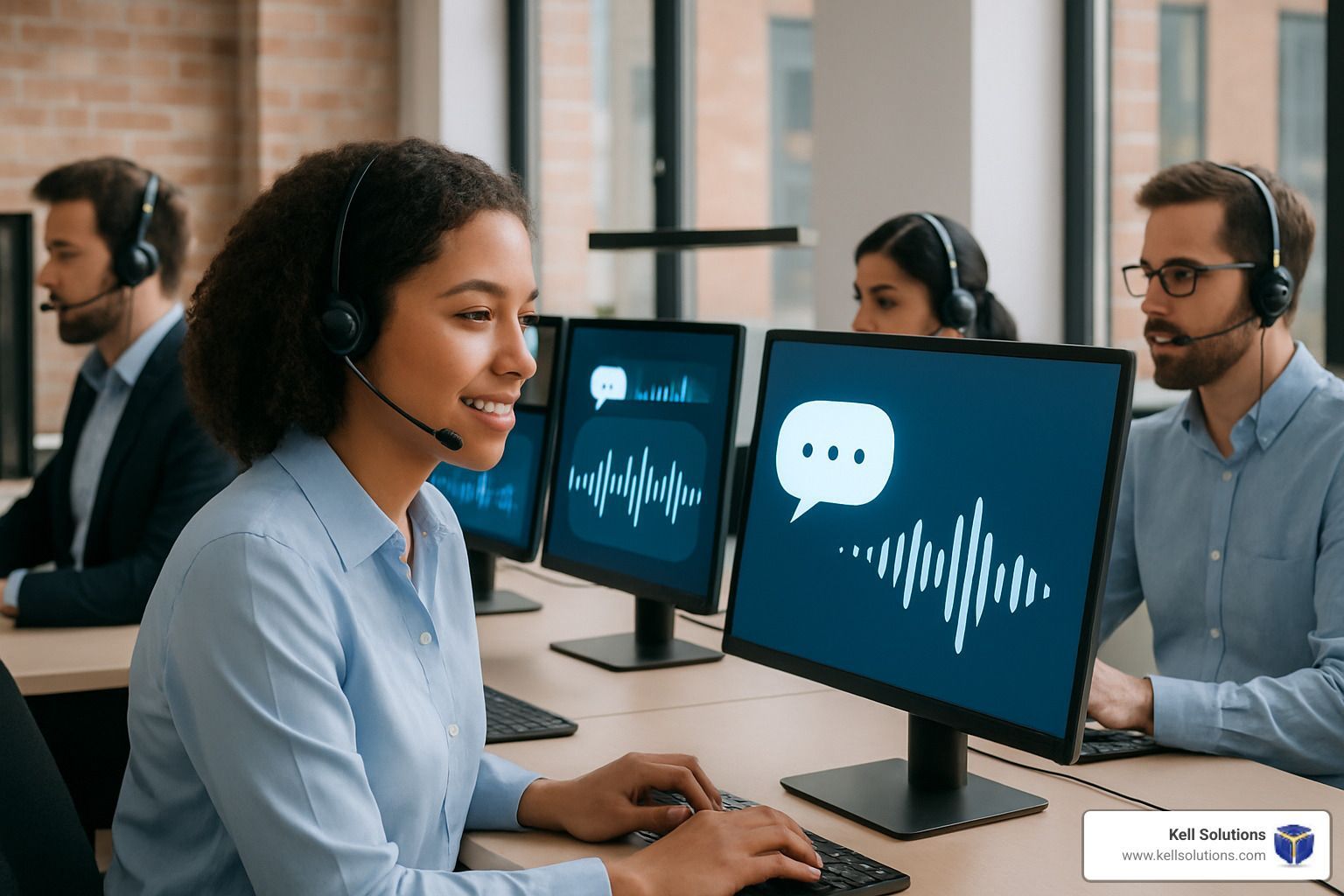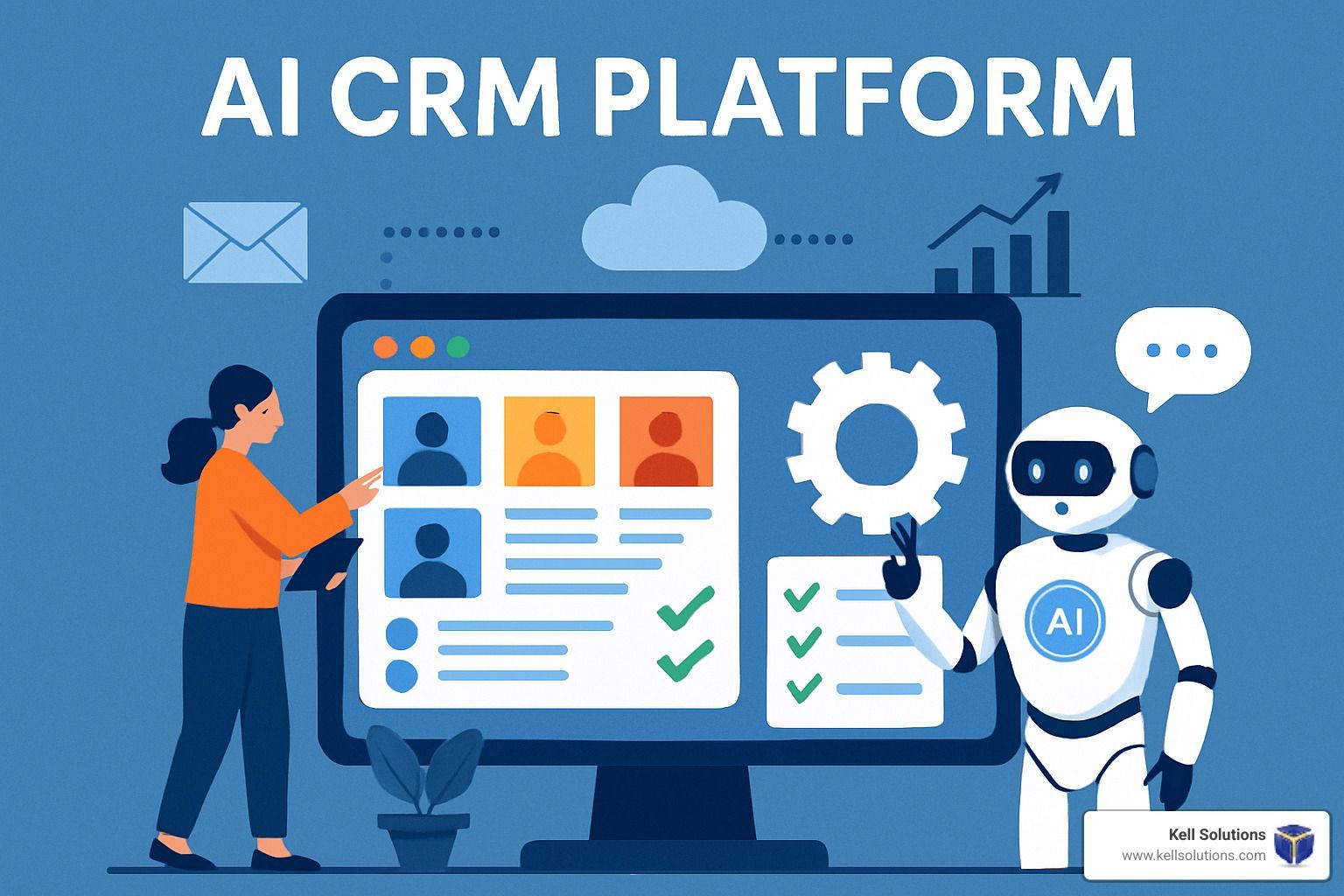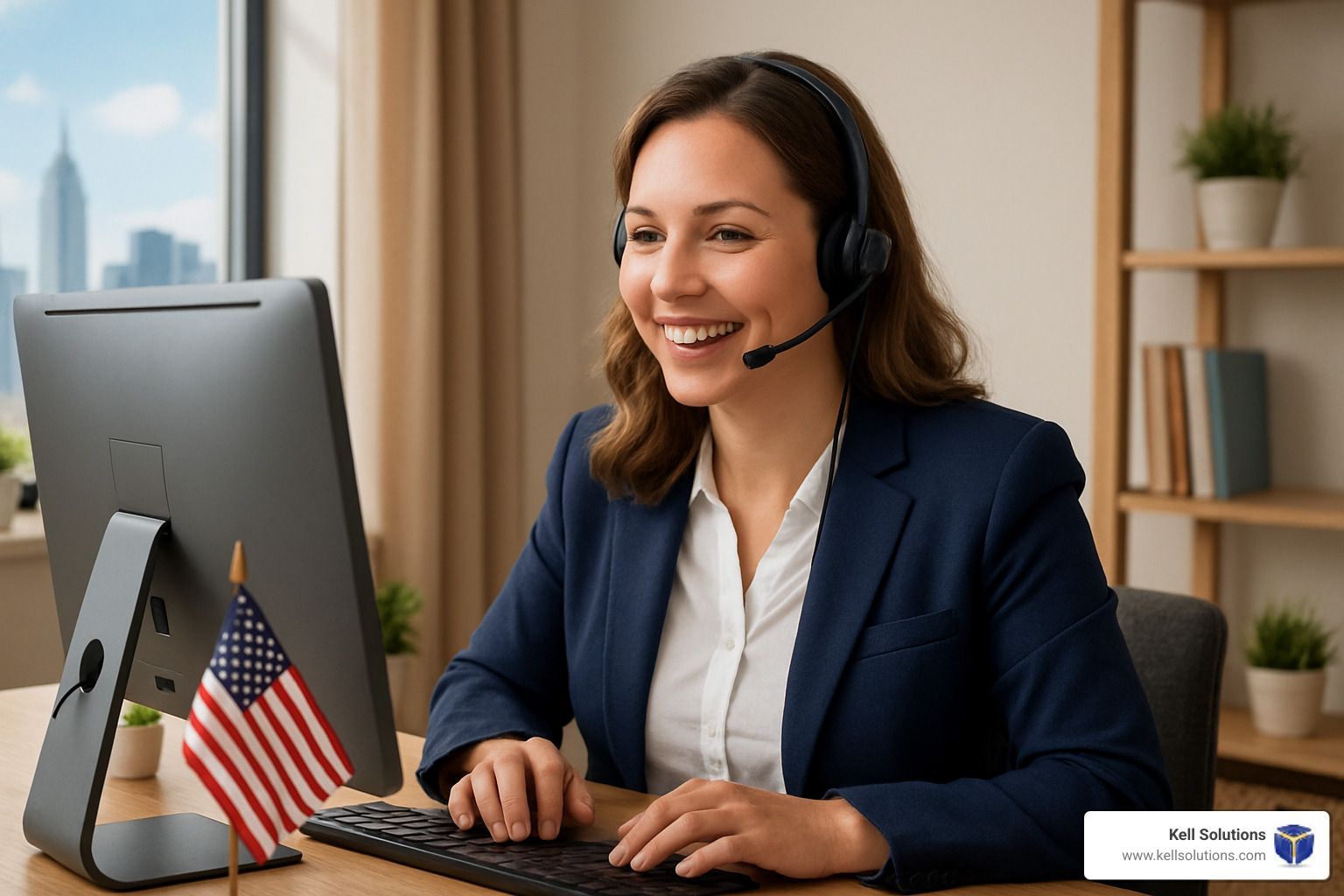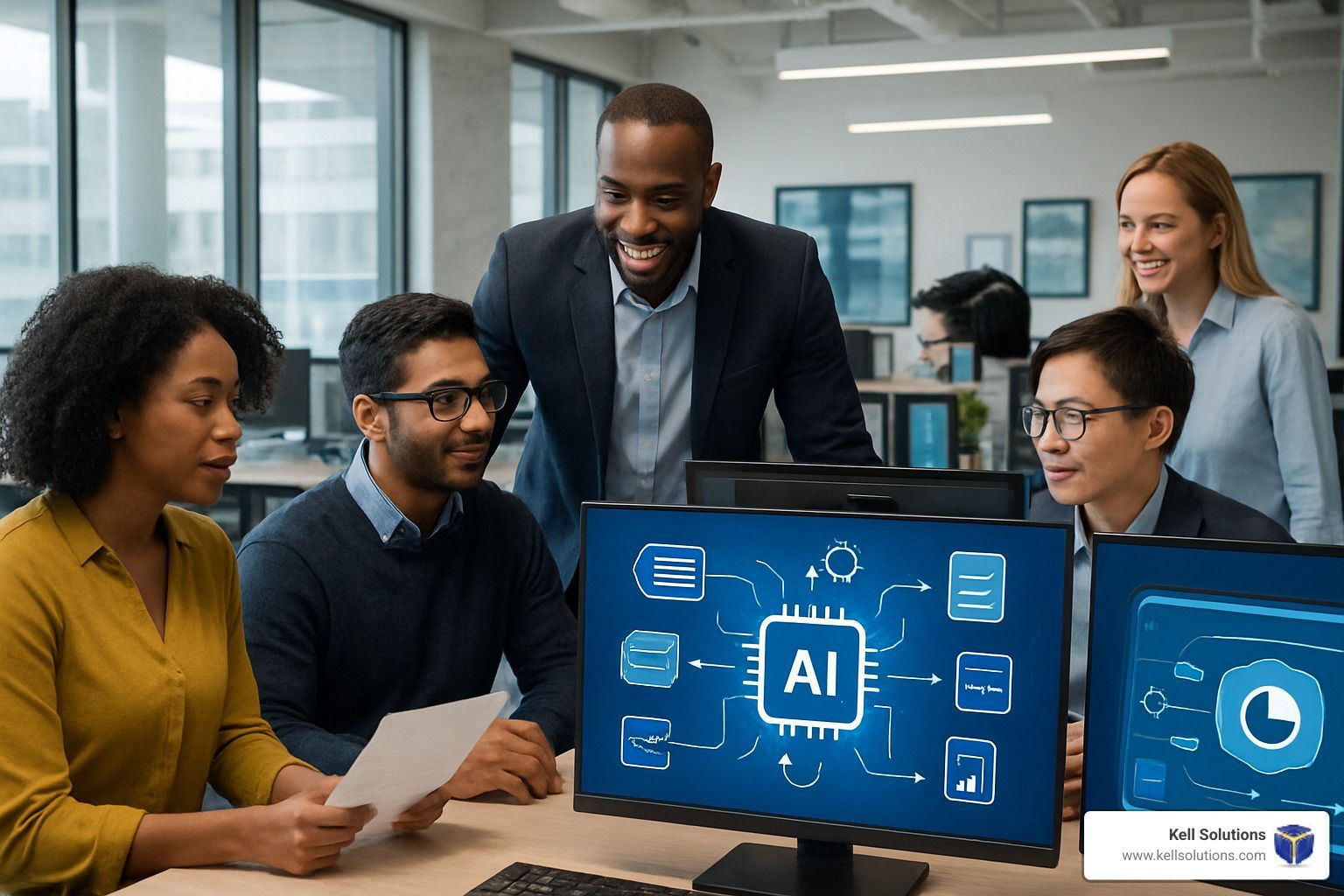AI Receptionists Are Answering Calls 24/7 (And They Never Need Coffee Breaks)
The 24/7 Solution to Missed Calls and Lost Leads
An AI receptionist is a virtual assistant powered by artificial intelligence that handles phone calls, books appointments, and provides customer support around the clock without breaks or human intervention.
The statistics are sobering: 60% of customers prefer to call local businesses after finding them online, yet only 38% of these calls get answered. Worse still, just 20% of callers leave a voicemail when they don't reach anyone. That's a staggering number of missed opportunities for your business.
AI receptionists solve this problem by ensuring every call is answered, regardless of time of day or staff availability. Unlike human receptionists who need breaks, vacations, and sleep, an AI receptionist works continuously without fatigue or fluctuations in performance.
"Our time is too valuable to be spent on boring routine tasks—we should leave routine to machines."
Modern AI receptionists can handle multiple calls simultaneously, speak in natural-sounding voices across multiple languages, and seamlessly integrate with your scheduling software, CRM, and other business tools. Most small businesses recoup the monthly cost (typically $30-$300) by booking just one appointment that would have otherwise been missed.
Setting up an AI receptionist is surprisingly simple—most solutions promise configuration in under 10 minutes with no technical experience required. You can keep your existing business phone number by using call forwarding, ensuring a smooth transition that's invisible to your customers.
I'm Gregg Kell, founder of Kell Web Solutions, and I've spent years helping small businesses implement AI receptionist solutions that dramatically reduce missed calls while increasing appointment bookings and customer satisfaction. As the creator of VoiceGenie AI, I've designed conversational AI specifically for service businesses that need reliable, affordable call handling without the complexity.
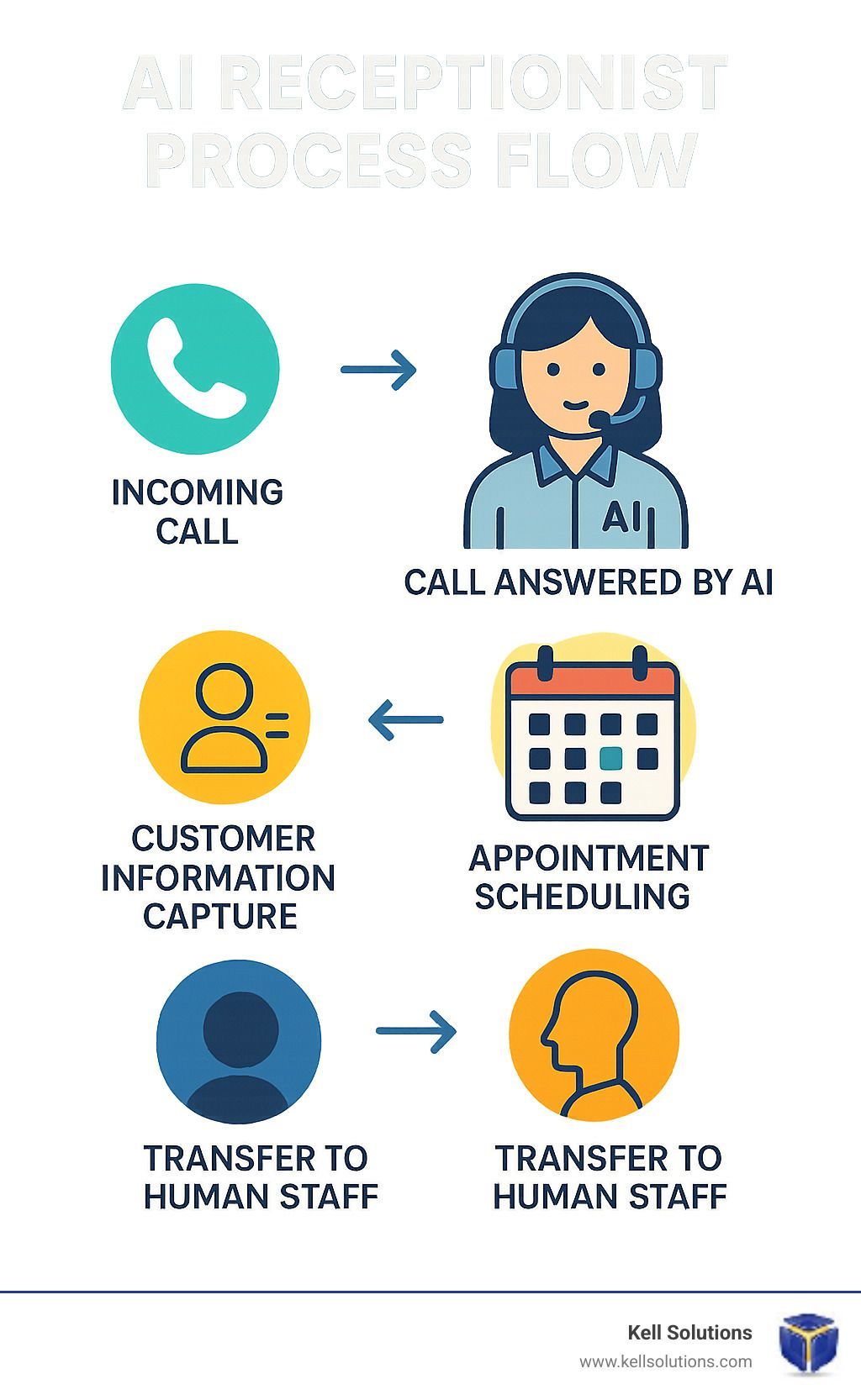
What Is an AI Receptionist & How It Works
An AI receptionist is your virtual front desk superhero – always on duty, never needing coffee breaks, and remarkably good at juggling multiple conversations at once. At its core, this technology uses artificial intelligence to answer your business calls, respond to customer questions, schedule appointments, and direct calls to the right team members when needed.
Unlike those frustrating old-school phone menus ("Press 1 for sales, press 2 to hear this menu again..."), modern AI receptionists understand natural conversation. They use sophisticated natural language processing (NLP) to grasp what your callers actually want, even when they speak in casual, everyday language.
"By revealing that only 38% of online leads are answered and just 20% leave voicemails, we can see the massive missed revenue opportunities for businesses without 24/7 call answering." - Synthflow customer insight
The science behind this technology is fascinating – these systems essentially use speech-to-speech technology powered by large language models (LLMs), similar to what drives ChatGPT. When someone calls your business, your friendly AI receptionist answers with your customized greeting, listens carefully to what they need, and responds in a natural, conversational way.
Recent scientific research on conversational AI shows these systems have become remarkably sophisticated. According to a study published in the Journal of Artificial Intelligence Research, today's AI receptionists can detect a caller's mood, switch languages on the fly, handle several calls at once, text appointment links during conversations, update your CRM automatically, and know exactly when to bring in a human team member.
At Kell Solutions, we've built our AI receptionists on reliable cloud telephony infrastructure. This means your virtual front desk stays operational even during local power outages or internet problems – ensuring you never miss another important call.
The Core Architecture Behind an AI Receptionist
Think of an AI receptionist as having several intelligent systems working together behind the scenes:
First, there's the voice recognition system that converts spoken words into text, paired with natural language understanding that figures out what your caller actually wants (their "intent").
Your AI receptionist also maintains a customized knowledge base – essentially everything it needs to know about your business, from services and pricing to operating hours and FAQs.
The voice synthesis component is what gives your AI receptionist its human-like quality. Many platforms even offer voice cloning technology that can create a voice perfectly aligned with your brand personality.
Intelligence happens through the intent detection system, which quickly determines whether someone is calling to book an appointment, ask about your services, or handle something else entirely.
Perhaps most importantly, AI receptionists include smart handoff logic – rules that determine when a conversation should be passed to a human team member based on complexity, emotion, or specific triggers you define.
The best part? These systems get smarter over time through continuous learning, analyzing successful interactions and incorporating feedback to constantly improve.
AI Receptionist Use-Flow From Ring To Resolution
Let's walk through what happens during a typical AI receptionist interaction:
When someone calls your business, the call ingestion process begins – your AI answers directly or picks up if your team doesn't. It greets the caller with your customized welcome message, optionally mentioning they're speaking with an AI assistant.
As your customer explains why they're calling, real-time transcription converts their words to text, while the system analyzes meaning and intent. Within milliseconds, the AI receptionist formulates a natural-sounding response based on your knowledge base.
Throughout the conversation, your virtual assistant captures important details – the caller's name, contact information, reason for calling, and any specific needs they mention.
Depending on what the caller needs, your AI receptionist might schedule an appointment by checking your calendar for availability, send a text message with a booking link, answer questions about your services, create a follow-up task, or transfer the call to the right team member.
After wrapping up, all the information collected is automatically written back to your CRM or business management system. Every interaction is also analyzed for quality and effectiveness, helping the system continuously improve.
As one salon owner shared: "Before implementing an AI receptionist, I was constantly juggling phone calls while trying to serve clients in my chair. Now, calls are handled automatically, appointments are booked directly into my calendar, and I only get involved when truly necessary."
The best part? This technology doesn't just answer calls – it creates a seamless experience that feels surprisingly human while ensuring you never miss another opportunity to serve a customer or capture a lead.
9 Key Benefits of Using an AI Receptionist
When you bring an AI receptionist into your business, you're not just adopting new technology – you're changing how you connect with customers and manage your front desk operations. Here's why thousands of businesses are making the switch:
1. 24/7 Availability
Your AI receptionist never needs sleep, coffee breaks, or vacation days. While your human team rests (as they should!), your virtual assistant keeps working, answering calls at 3 AM just as cheerfully as at 3 PM. This round-the-clock availability ensures you capture every potential lead, even those calling outside traditional business hours.
"Follow up with your leads instantly and never miss a client. Activate dormant leads and deliver exceptional customer service 24/7."
2. Zero Hold Times
We've all been there – stuck on hold listening to the same muzak track for what feels like eternity. Your callers hate this experience too. Unlike a human receptionist juggling multiple tasks, your AI receptionist can handle numerous calls simultaneously, eliminating frustrating hold times and creating a smoother customer experience from the first "hello."
3. Substantial Cost Savings
Let's talk dollars and sense. A full-time human receptionist typically costs between $30,000-$45,000 annually in salary alone – and that's before adding benefits, training costs, and management time. By contrast, AI receptionist services generally range from just $30-$300 per month. For many businesses, this represents an 80-95% cost reduction while actually improving availability. The math simply makes sense.
4. Unlimited Scalability
Whether you're experiencing seasonal rushes or steady growth, your AI receptionist scales effortlessly to match your needs. On Monday you might receive 10 calls, and on Tuesday 100 – your virtual assistant handles both scenarios with the same efficiency, no hiring or training required. This flexibility is particularly valuable for businesses with fluctuating call volumes.
5. Multilingual Support
In our diverse world, language barriers can cost you business. Many AI receptionist platforms, including our solutions at Kell Solutions, support up to 10 languages including English, Spanish, French, German, Portuguese, Japanese, Mandarin, Arabic, Russian, and Hindi. This allows you to serve a global customer base without the expense of hiring multilingual staff.
6. Comprehensive Data Capture
Every conversation becomes a valuable data point with an AI receptionist. The system automatically captures caller details, creates transcripts, and logs information directly to your CRM. This treasure trove of data helps you understand customer needs better and provides perfect documentation for follow-ups, training, and compliance requirements.
7. No Lost Voicemails
Here's a sobering statistic: only 20% of callers leave voicemails when they can't reach someone. That means without an AI receptionist, you're potentially missing 80% of your after-hours leads. Your virtual assistant captures information from every caller, dramatically increasing your opportunity to convert these contacts into customers.
8. Parallel Call Handling
Monday mornings can bring call surges that overwhelm human receptionists. Your AI receptionist handles multiple conversations simultaneously, ensuring no caller is ever sent to voicemail during busy periods. This parallel processing ability means you're effectively getting the work of several receptionists for the price of one subscription.
9. Brand Consistency
Your brand voice matters. An AI receptionist delivers consistent messaging and tone across all interactions, ensuring your company is represented exactly as you intend, every time. No more worrying about a receptionist having an off day or forgetting your latest promotional details – your virtual assistant stays perfectly on-message.
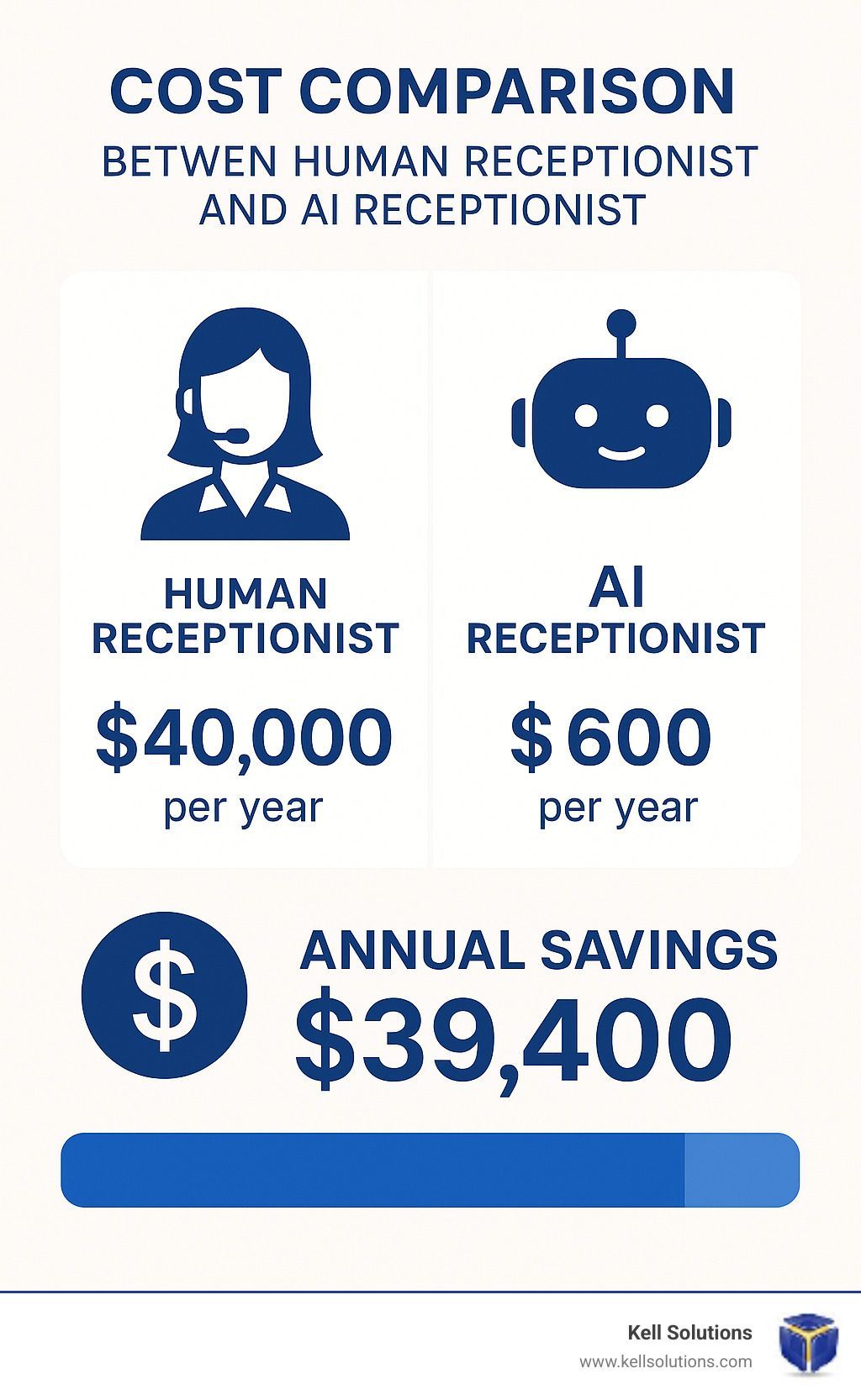
The benefits of an AI receptionist extend beyond just cost savings – they create a more responsive business that never misses an opportunity to connect with customers. Many of our clients find that the investment pays for itself when just one additional appointment is booked each month that would have otherwise been missed.
When a Human Touch Still Matters
As impressive as AI receptionists have become, they're not the right fit for every situation. Some conversations still benefit from human involvement:
When emotions run high, nothing beats human empathy. If a caller is distressed or upset, a compassionate human voice can make all the difference.
Legal matters often require nuanced judgment that AI isn't quite ready to handle independently. The same goes for situations with complex compliance requirements.
For high-value sales opportunities where subtle negotiation tactics might seal the deal, human persuasion skills still have the edge.
And some technical troubleshooting scenarios require the kind of creative problem-solving that humans excel at.
This is why many of our clients at Kell Solutions opt for a hybrid approach. The AI receptionist handles the routine calls and initial screening, then smoothly hands off to human staff when the situation calls for it. It's the best of both worlds – efficiency where possible, humanity where needed.
Why Callers Accept AI Receptionists
You might worry that callers will hang up the moment they realize they're talking to an AI. Surprisingly, the data tells a different story:
Goodcall reports that 97% of callers happily interact with their AI phone agents. And 8 out of 10 callers don't mind speaking with an AI when they know what they're getting.
Modern AI receptionists are winning people over for several compelling reasons. Today's AI voices sound remarkably natural – gone are the robotic, monotone responses of early systems. They respond instantly without awkward pauses or verbal fillers. And let's be honest – callers care more about getting their problems solved quickly than whether there's a human on the other end.
Being transparent actually helps too. When callers know upfront they're speaking with an AI assistant, it builds trust rather than eroding it. And when the experience is smooth and their needs are met efficiently, any initial hesitation quickly fades.
For the best caller experience, we recommend:
Being upfront about the AI nature of your receptionist, personalizing greetings to sound warm and welcoming, ensuring seamless transfers to humans when appropriate, and continuously improving responses based on real caller interactions.
The receptionist talent shortage isn't going away anytime soon. But with an AI receptionist handling your front desk, you can turn that challenge into an opportunity – delivering consistent, 24/7 service while freeing your human team to focus on what humans do best.
Choosing the Right AI Receptionist Platform: Features Checklist & Setup Steps
Shopping for an AI receptionist can feel overwhelming with so many options out there. But don't worry—I'll walk you through exactly what to look for and how to get started without the techno-babble.
First, let's talk about what really matters in an AI receptionist. Think of these as your non-negotiables:
Your AI receptionist should speak naturally—nobody wants to talk to a robot that sounds like, well, a robot. It should also learn about your business through a customizable knowledge base. The best systems handle not just phone calls but text messages too, and they'll plug right into your calendar so clients can book appointments without any manual work on your end.
Look for seamless CRM integration so all your customer data stays organized, easy call transfers when a human needs to step in, and a dashboard that shows you exactly how the system is performing. And of course, you'll want to customize the greeting to sound like your brand, not some generic message.
If you serve diverse communities, multi-language support is a game-changer. And for healthcare businesses, HIPAA compliance isn't just nice to have—it's essential.
At Kell Solutions, we've built VoiceGenie AI with all these features, focusing especially on making it incredibly easy to set up. As one customer told us, "It feels like having a professional receptionist who never has a bad day." More info about automated call answering
Quick-Start Setup in Under 10 Minutes
Remember when setting up new technology meant clearing your schedule for the day? Not anymore. Most AI receptionists today—including ours—can be up and running before your coffee gets cold.
The process is refreshingly simple: Choose your platform, create an account, and then customize your AI. You'll select a voice that matches your brand personality, write a warm greeting, input your business details like hours and services, and set up answers to common questions.
Next, you'll either get a new phone number or (more commonly) set up call forwarding from your existing business line. Make a few test calls to fine-tune how your virtual receptionist handles different scenarios, and then flip the switch to go live.
One skeptical salon owner told us: "I was putting this off for weeks thinking it would be complicated. I literally had my AI receptionist handling calls during my lunch break on the same day I signed up. The templates made it so easy."
Critical Integrations & Workflows
The magic really happens when your AI receptionist talks to your other business tools. This is where the real time-saving begins.
Calendar connections mean your AI can check real-time availability and book appointments directly into systems like Google Calendar, Calendly, Acuity, Outlook, or industry-specific tools like Vagaro for salons.
CRM integration ensures every caller's information lands in your customer database automatically—whether you use Salesforce, HubSpot, Zoho, or another system. No more scribbled notes or forgotten follow-ups.
With workflow automation through tools like Zapier, your AI receptionist becomes the first domino in a chain of automated actions. Imagine: a new client calls, the AI books their appointment, and automatically triggers a welcome email, adds them to your newsletter, and creates a reminder for you to check in after their visit.
For businesses with special requirements, compliance features ensure you stay on the right side of regulations. This includes HIPAA-compliant handling for healthcare, PCI compliance for payments, and proper call recording disclosures.
More info about VoiceGenie AI pricing
Understanding Costs & ROI
Let's talk money—both what you'll spend and what you'll save with an AI receptionist.
Most pricing falls into three buckets: subscription-based plans (typically $30-$300 monthly) with tiered features, pay-per-minute models where you only pay for active call time (often starting with a base allocation plus $0.15/minute thereafter), or hybrid approaches combining both methods.
The return on investment story is where things get exciting. Most small businesses find that just one booked appointment that would have otherwise been missed easily covers the monthly cost. But the benefits compound: your staff focuses on higher-value work instead of answering routine calls, customer satisfaction improves with 24/7 availability, and you capture valuable data about what your customers really want.
A plumbing company owner summed it up perfectly: "We were literally throwing money away before our AI receptionist. We calculated that missed calls were costing us about $2,000 in lost jobs monthly. Now we capture every lead, even at 2 AM when someone's basement is flooding, and our monthly revenue is up by almost $5,000 while our office staff is less stressed."
The math is simple—when you never miss a call, you never miss an opportunity.
Industry Use Cases & Real-World Wins
The versatility of AI receptionists makes them valuable across numerous industries. Here's how different sectors are leveraging this technology:

Home & Field Services Booking More Jobs Automatically
Field service businesses face unique challenges with phone management. When your plumbers, landscapers, and cleaners are elbow-deep in work, they simply can't answer calls. This is where AI receptionists truly shine.
A plumbing company owner in Dallas told me, "Our emergency call volume is completely unpredictable. Before our AI receptionist, we'd miss calls during dinner rushes or overnight emergencies. Now every call gets answered, the AI captures all the necessary details, and either books directly into our schedule or alerts our on-call tech for true emergencies."
For landscaping businesses, seasonal demand creates major staffing headaches. One landscaper shared, "Spring and fall, our phones ring non-stop. Our AI receptionist now handles all initial inquiries, collects property details, and schedules estimates. We've increased our conversion rate by 35% simply by answering every call."
Cleaning services find particular value in lead qualification. "Our AI receptionist asks about square footage, service type, and cleaning frequency," explained a maid service owner. "This pre-qualification saves our sales team hours each week and helps us prepare accurate quotes before the first human conversation."
What makes these implementations especially powerful is integration with route optimization software. When a new job is booked, it's automatically added to the optimal route for the appropriate technician – no dispatcher needed.
Professional & Healthcare Practices Improving Intake
For lawyers, dentists, and medical practices, efficient phone management directly impacts the bottom line and patient care.
A family law attorney in Chicago implemented an AI receptionist last year and noticed immediate results: "Our AI conducts initial intake for potential clients, gathering case details and urgency before routing to the appropriate attorney. This has dramatically improved our response time and helped us better qualify which cases fit our practice."
Dental practices particularly appreciate the scheduling capabilities. "Patients can now schedule routine cleanings and check appointment availability at 10 PM on a Sunday," said one office manager. "Our front desk staff now focuses on the patients physically in our office rather than constantly juggling calls about basic scheduling."
Medical clinics use AI receptionists in surprisingly sophisticated ways. "Our AI handles appointment scheduling, insurance verification questions, and even basic symptom triage," explained a clinic administrator. "For non-HIPAA questions, it provides immediate answers, while sensitive inquiries are routed to our nursing staff with all relevant information already captured."
For healthcare practices, HIPAA compliance is non-negotiable. At Kell Solutions, we've built specific compliance-oriented prompts and secure data handling to ensure patient information remains protected throughout every interaction.
Hospitality, Retail, and Automotive Capturing Every Lead
Customer-facing businesses with high call volumes see immediate benefits from implementing an AI receptionist.
A boutique hotel manager shared, "Our AI receptionist handles reservation inquiries, answers questions about amenities, and even provides local restaurant recommendations. During wedding season and holidays, this has eliminated hold times completely and improved our booking conversion rate."
Retail stores use AI receptionists in creative ways. "We configured our AI to handle product availability questions, store hours inquiries, and to coordinate curbside pickup," explained a store owner. "This freed our in-store staff to focus on customers physically present in the store – the ones ready to buy right now."
Automotive dealerships have found particular value in streamlining test drives. "Test drive scheduling used to eat up our sales representatives' time," a sales manager told me. "Now our AI receptionist handles this automatically, collecting customer information, vehicle interests, and preferred times. Our sales team now spends more time with serious buyers and less time on phone coordination."
One feature that's proven especially valuable across these industries is the ability to send text messages with links during calls. For example, an automotive dealership's AI receptionist can text a link to specific vehicle information or a showroom map while speaking with the caller – creating a seamless multi-channel experience that feels surprisingly personal.
Managing, Securing & Optimizing Your AI Receptionist
Once your AI receptionist is up and running, it's not just a "set it and forget it" solution. Like any valuable team member, your virtual assistant needs ongoing attention to perform at its best. Let's explore how to keep your digital receptionist secure, compliant, and continuously improving.
Data Privacy, Security & Compliance Fundamentals
In today's digital landscape, protecting customer data isn't just good practice—it's essential for maintaining trust and meeting legal requirements.
Your AI receptionist handles sensitive caller information every day, from personal details to potentially confidential business discussions. That's why robust security measures are non-negotiable. Make sure all call data, transcripts, and customer information are encrypted both during transmission and storage.
For healthcare providers, HIPAA compliance is critical. Your AI receptionist provider should offer a Business Associate Agreement (BAA), secure data storage, strict access controls, and comprehensive audit trails. At Kell Solutions, we've built our systems with healthcare providers in mind, ensuring patient information remains protected.
Other important compliance considerations include TCPA regulations around call recording (always disclose when calls are being recorded) and GDPR requirements for businesses serving European customers. The smartest approach is implementing role-based access—limiting who can view call transcripts and customer data based on their position in your company.
"Privacy isn't just a legal requirement, it's a promise we make to our customers," explains a dental practice owner using our system. "Knowing our AI receptionist maintains the same high standards as our human team gives us peace of mind."
Measuring Performance & Making Improvements
The real magic happens when you start using data to refine your AI receptionist's performance. A good system provides analytics that help you understand what's working and what needs attention.
Keep an eye on your automation rate—the percentage of calls handled entirely by AI without human help. This number typically improves over time as you fine-tune your system. Call duration is another telling metric, as shorter calls often indicate more efficient resolution (though some businesses may actually want longer, more thorough interactions).
One of the most valuable improvement strategies is transcript mining—regularly reviewing conversations to identify common questions or issues that challenged your AI. These insights let you expand your knowledge base and refine responses. Many businesses conduct A/B testing with different greetings or scripts to see which performs best with their specific callers.
A landscape company owner shared this experience: "We noticed our AI receptionist was getting tripped up when people asked about 'yard work' instead of 'landscaping.' By adding these alternate terms to our knowledge base, our successful call completion rate jumped by 15%."
The best AI receptionist platforms make these improvements easy with intuitive dashboards that highlight opportunities for optimization. At Kell Solutions, we've designed our analytics to spotlight both wins and areas for improvement, making continuous refinement straightforward even for busy business owners.
Limitations & The Future of AI Receptionists
While today's AI receptionists are remarkably capable, understanding their limitations helps set appropriate expectations. Complex emotional situations still benefit from human empathy, and highly technical troubleshooting can sometimes challenge AI systems. Unusual requests or heavy background noise might occasionally require human intervention.
But the technology is evolving rapidly. Google Trends shows interest in AI receptionist technology has grown approximately 150% year-over-year since 2020—we're still in the early chapters of this change.
The future looks exciting, with several developments on the horizon. Multimodal interactions will soon combine voice with visual elements, allowing callers to receive images or interactive forms during calls. Proactive outbound engagement is emerging, with AI systems handling appointment reminders and follow-ups. Emotional intelligence continues to improve, creating more natural, responsive conversations.
Perhaps most promising is the evolution toward true AI-human collaboration, where virtual and human team members work seamlessly together—AI handling routine portions of calls while humans step in for complex situations. This hybrid approach delivers the efficiency of automation with the warmth of human connection exactly when it matters most.
"We're moving toward a world where the line between AI and human assistance becomes increasingly blurred," notes a business owner using our system. "What matters isn't who answers the phone, but that every caller gets the help they need, when they need it."
More info about AI phone agents improving loyalty
Frequently Asked Questions about AI Receptionists
How quickly can I deploy an AI receptionist?
Getting started with an AI receptionist is surprisingly quick! Most platforms, including ours at Kell Solutions, can be up and running in under 10 minutes. The process is refreshingly straightforward:
You'll create an account, provide some basic details about your business, teach your AI about your services, and set up your phone system to work with it. It's about as complicated as setting up a new social media profile.
That said, while the basic setup is quick, many of our clients find it worthwhile to spend a little extra time fine-tuning their system. Think of it like training a new employee – the more information you provide upfront, the better they'll perform.
One of our lawn care clients put it perfectly: "I had the basic system running in minutes, but I spent about an hour really customizing it to handle our seasonal services questions. That extra time paid off tremendously when calls started coming in."
We recommend setting aside 1-2 hours to thoroughly test your AI receptionist with different call scenarios before fully relying on it. This small investment upfront leads to much smoother operations down the road.
Can an AI receptionist handle both inbound and outbound calls?
The short answer is yes – but with some important nuances.
Most AI receptionist solutions today (including ours) excel primarily at handling incoming calls. They're like that perfect front desk person who never takes a day off. For inbound calls, they're ready to answer questions, book appointments, and capture lead information around the clock.
The outbound calling capabilities are evolving rapidly, though. Current systems can typically handle straightforward outbound communications like:
- "Hi Sarah, just confirming your appointment tomorrow at 2pm"
- "Thanks for your recent visit to our salon. How was your experience?"
- "The part you ordered has arrived at our shop"
It's worth noting that there are strict regulations around automated calling. In the US, the Telephone Consumer Protection Act (TCPA) requires explicit consent before making automated calls to consumers. Always make sure your outbound calling practices stay on the right side of these regulations.
At Kell Solutions, we've focused on perfecting the inbound experience first, as that's where most businesses see immediate ROI. We're continuing to develop compliant outbound capabilities that respect both regulations and customer preferences.
How does an AI receptionist integrate with my existing tools?
This is where modern AI receptionists really shine compared to their predecessors. Today's systems are designed to play nicely with the business tools you already use.
Most quality platforms (ours included) connect seamlessly with popular calendar systems like Google Calendar, Microsoft Outlook, and Calendly. This means when your AI receptionist books an appointment, it appears directly in your calendar – no manual entry required.
For customer information, your AI can feed data directly into CRM platforms like Salesforce, HubSpot, or Zoho. Imagine every call automatically creating or updating customer records with notes about what was discussed. One of our accounting clients told us this integration "eliminated about 10 hours of data entry every week."
Beyond these basics, many AI receptionists also connect with:
- Business management software like QuickBooks or industry-specific tools
- Team communication platforms like Slack or Microsoft Teams
- Email systems for automated follow-ups
- Payment processing systems for handling transactions
These connections typically happen through direct API integrations, through middleware like Zapier, or via custom webhook triggers for more specialized needs.
At Kell Solutions, we've made these integrations as painless as possible. Our setup guides walk you through connecting with common platforms step-by-step, and our team is always available to help with custom integration needs. After all, your AI receptionist should fit into your existing workflow, not force you to change how you work.
Conclusion
The rise of AI receptionists represents a fundamental shift in how businesses manage customer communications. No longer must you choose between missed opportunities and prohibitive staffing costs—AI offers a third path that combines reliability, scalability, and affordability.
The numbers tell a compelling story. With most AI receptionist solutions costing between $30-$300 per month (compared to $30,000+ annually for a human receptionist), you'll likely break even after capturing just one or two leads that would have otherwise slipped away. When you factor in 24/7 availability, seamless handling of multiple languages, and consistent performance day after day, it's easy to see why businesses across industries are making the switch.
We've seen this change at Kell Solutions. Businesses implementing our VoiceGenie AI voice agents typically experience a 30-40% increase in captured leads. They book 25% more appointments while saving their staff 15-20 hours of phone time each week. Perhaps most importantly, their customers report higher satisfaction thanks to zero hold times and immediate assistance.
AI receptionist technology continues to evolve at a remarkable pace. Each new iteration brings more natural-sounding conversations, better understanding of context, and deeper integration with your existing business tools. By adopting this technology today, you're not just solving immediate communication challenges—you're future-proofing your customer experience for years to come.
The days of missed calls, frustrated customers, and lost opportunities can be behind you. Your business deserves to capture every potential lead, and your customers deserve immediate attention when they reach out. Your next customer is calling—will your AI receptionist be there to answer?
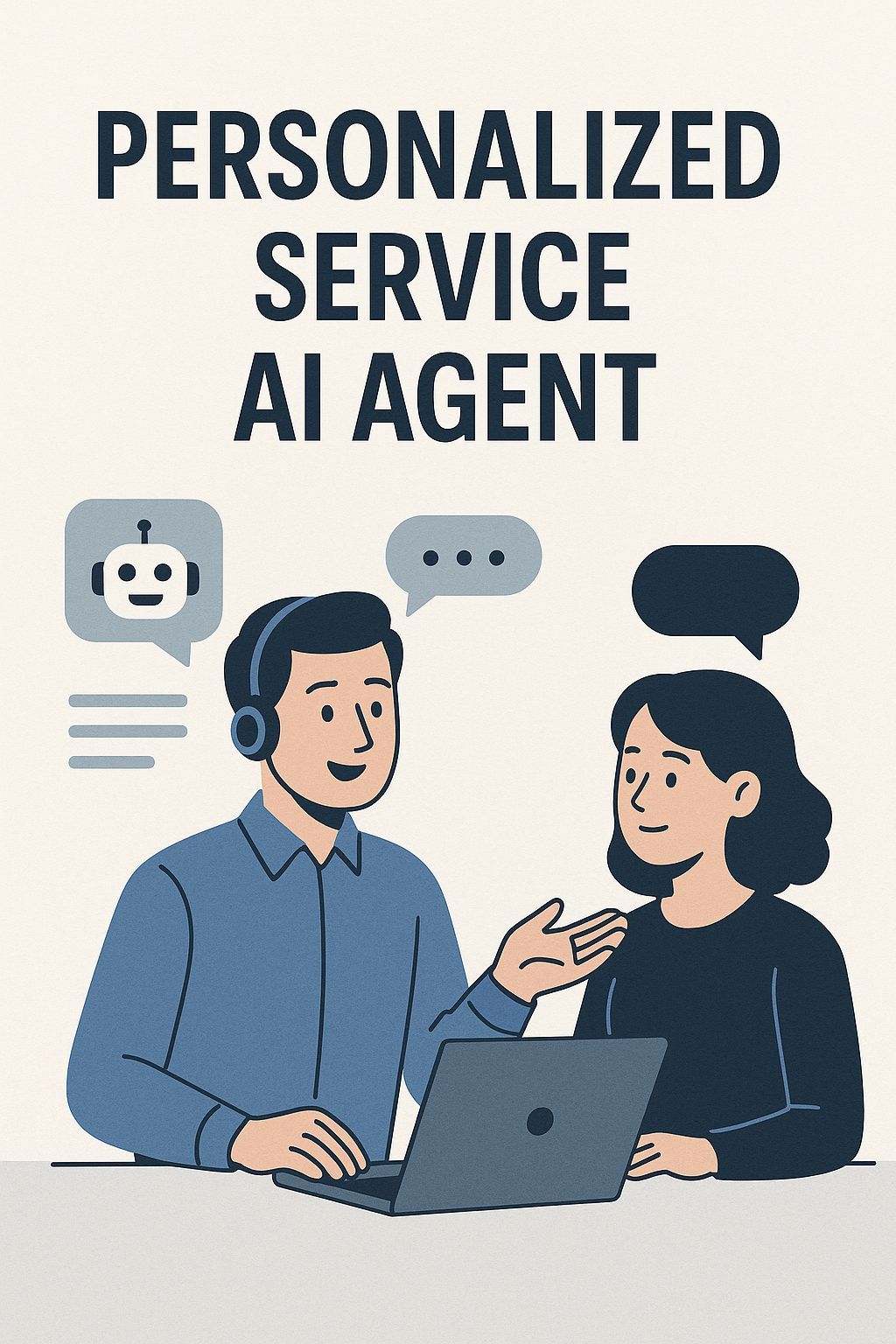

Orange County HVAC Google AI Overview Domination: 7 Proven Strategies to Capture Featured AI Results
